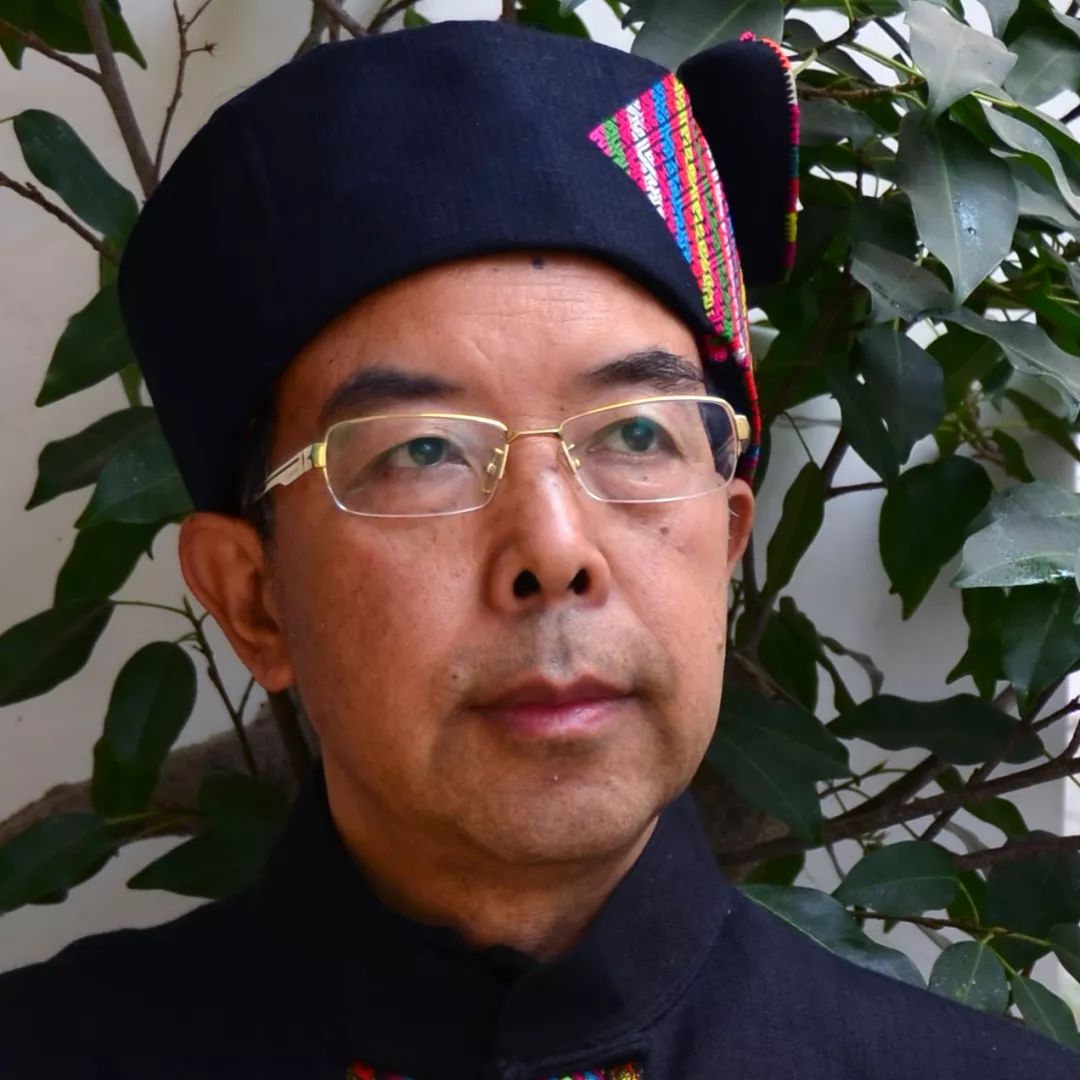
Photo: Wang Mingfu
Format: A Cong’er
Cartography: You Zi
Wenshan Prefecture is the second largest gathering place of the Zhuang nationality in China, with a population of more than 1.04 million (the population of the Zhuang nationality in Yunnan is more than 1.2 million). The Zhuang people in Wenshan are divided into three branches: Nong, Sha and Tu, and under the big branch, there are 11 small branches (ethnic groups). These branches have a general distribution range, and their clothing is different. To know these ethnic groups, clothing is a good way to identify them.
The Nong branch is a native of Yunnan

THE NONG COLLATERAL SERIES IS A NATIVE OF YUNNAN
Among the three major branches of the Wenshan Zhuang nationality, the Nong people have the largest population, accounting for 60%. They are natives of Wenshan Prefecture and a unique branch of the Zhuang nationality in Yunnan, which is different from the Zhuang nationality in Guangxi.
The Nong branch is divided into 5 small branches. Below, we will introduce them respectively.
1. Nongyang, mainly distributed in Wenshan, Xichou, Malipo, Yanshan and other counties and cities.

▲Nongyang’s “buffalo horn” headkerchief, bird clothes and silver ornaments, which are generally the “standard equipment” of Nong people’s traditional clothing, although there are many changes and ethnic differences. Taken in Shangxinmin Village, Xichou County in 2010
2. Nongdao, mainly distributed in Guangnan.

▲There are exceptions to the clothing of Nong men. The picture shows the costumes of the male dancers of the Nongdao branch of Guangnan County, wearing a belt with various birds embroidered on the belt pendant, which is full of ritual sense. According to research, this is related to the bird totem of the Nong ancestors. Taken in Liancheng Town, Guangnan County in 2006
3. Nong Dai, mainly distributed in Zhetu Township, Guangnan.

▲Nong men’s clothing is more simple than that of women. The picture shows the ceremony of the Nong-Dai branch in Guangnan offering sacrifices to the tribal king Nong Zhigao during the Northern Song Dynasty. The sacrificial time was held according to the time when the Nong Army troops passed through the village in the early days. The traditional costumes worn by men in this ceremony are all blue, and the complexity is close to that of women’s casual clothes. Taken in Fazao Village, Guangnan County in 2011


▲In the ceremonies and life of the Wenshan Nong people, there is a clear distinction between men and women, but in terms of clothing, certain occasions need to be swapped. The picture shows the ceremony of offering sacrifices to Jiulong Mountain (the sacred mountain of the Nong people) of the Nongdai branch of Guangnan County. The ceremony was held by men, but the male priests had to change into women’s clothes. It is said that in the early days, female priests presided over the ceremony. In the patrilineal clan society, male priests did not Changing women’s clothes for fear of God’s disapproval. The sacred “Pu Pu Zai” (Man Mountain) in Zhetu Township, Guangnan County in 2006
4. Nong Du is mainly distributed in Maguan County and Lao Cai Province in Vietnam.

▲This is also the casual clothes of middle-aged and elderly women from the Nong people (Nong Du), taken in A’e Village, Maguan County in 2007
5. Nongjiu, mainly distributed in the Sino-Vietnamese border in Malipo, Ha Giang Province in Vietnam and other places.
The clothing of the Nong people is similar, mainly in indigo cyan, with blue, red, purple and other decorative colors. The clothes have double breasts, slanted breasts, and skirts. The skirts have the famous bird clothes with tails. Tail-tailed bird clothing, according to research, originated from the bird worship of the ancestors of the Zhuang nationality, imitating birds (swans), not only decorated with bird patterns, but also decorated with bird-like “tails” on the waist and hips, that is, the tail. In addition, in order to imitate the body of a bird, the top is made very narrow, and women need to wear such a top for many years.

▲The traditional bird clothing with a tail of the Nong branch of the Zhuang nationality in Wenshan Prefecture. This is the most traditional Nong branch clothing. It consists of a short jacket and a pleated skirt that can be worn with a bird tail. The elderly women of the Nong people usually have a traditional Bird clothes are used for burial at the end of life. Taken in Guyu Village, Xichou County in 1989

▲Tailed bird clothing is a custom shared by different ethnic groups of the Nong branch. In the past, they were worn on occasions such as daily work, weddings and funerals, festivals and sacrifices. But now it has gradually withdrawn from daily life. Taken in Dehou Village, Wenshan City in 2009
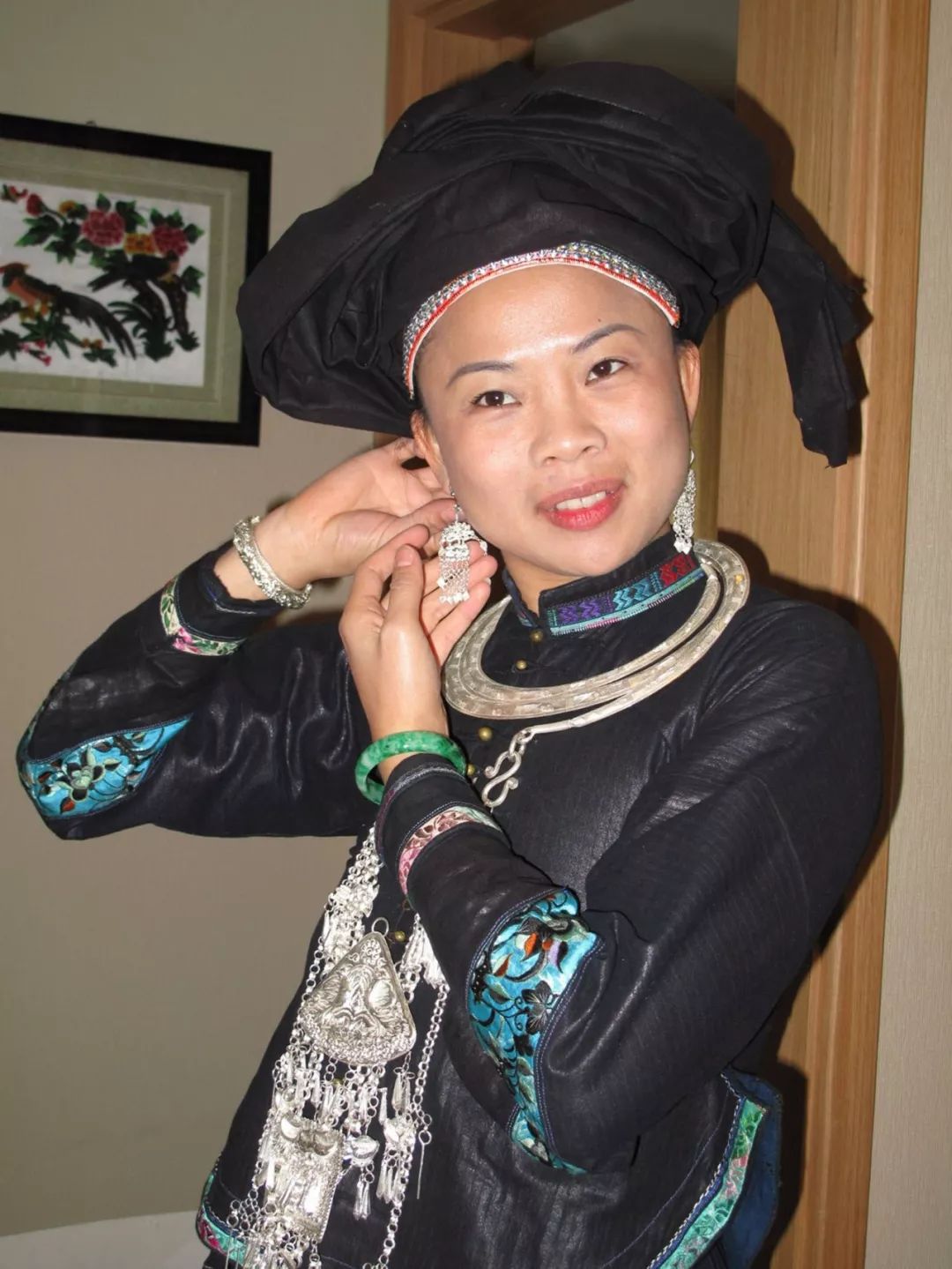
▲Traditional tailed bird clothing has many changes in modern times. The picture shows the modern version of the Nongyang branch’s “bird clothes”. Different from the traditional bird clothes with corsets, the imitation bird clothes can be worn without corsets after some improvements have been made. Taken in Jijie Township, Xichou County in 2010
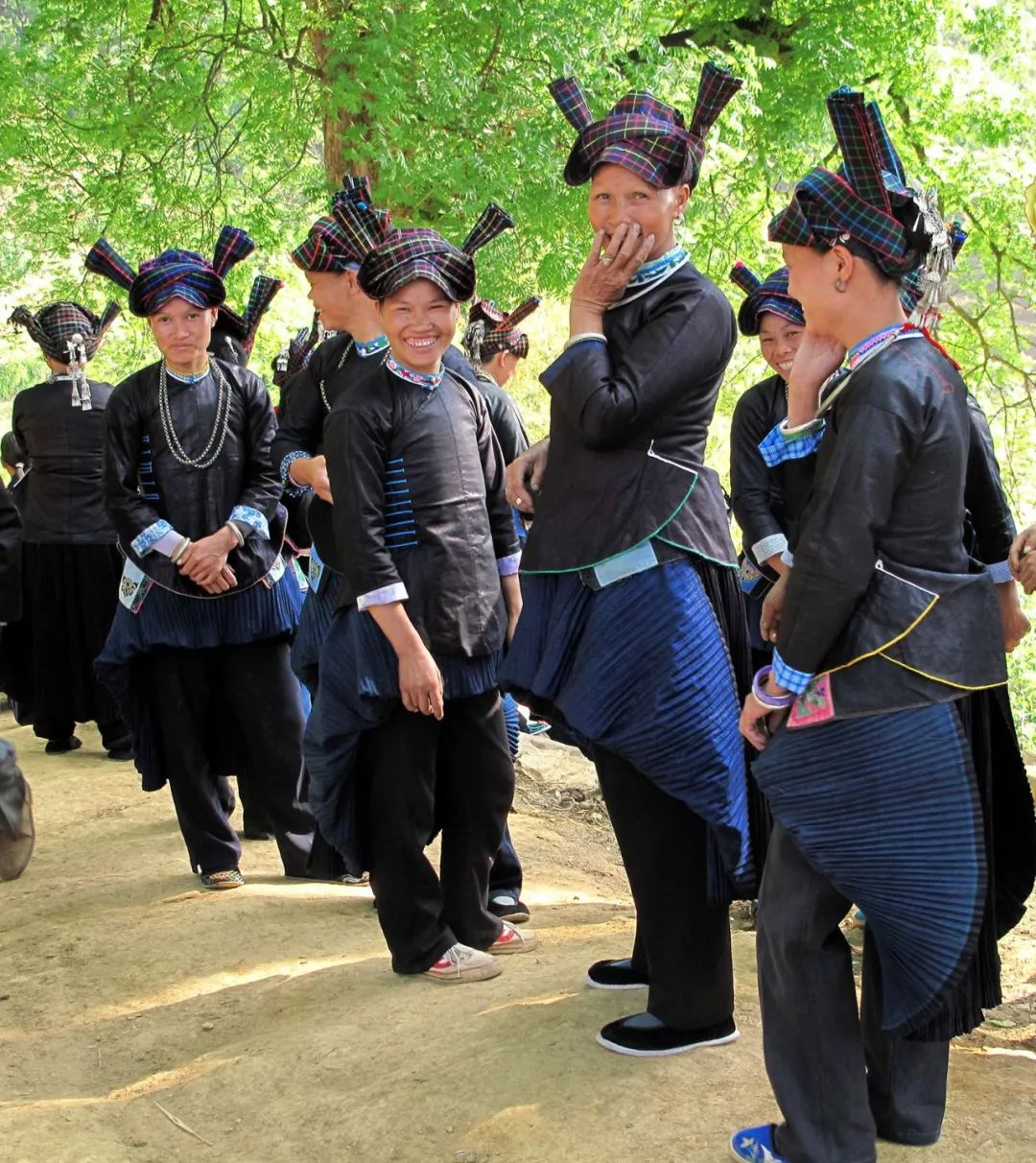
▲The modern version of the tailed bird clothing of the Nongdai branch. The change in dressing is to wear trousers under the traditional pleated skirt, and the way of wearing the tail is not to imitate the tail of a bird, but to simply fold the tail at the waist. Photographed in Fazao Village, Zhetu Township, Guangnan County in 2008
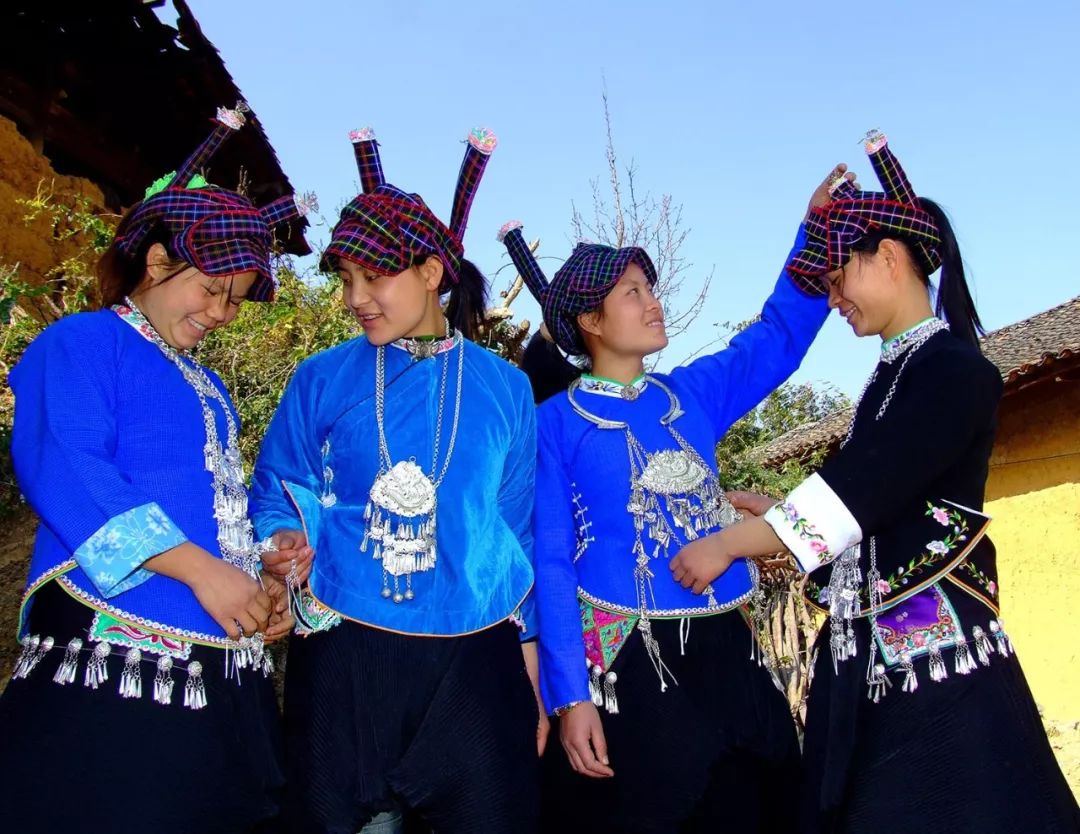
▲The pleated skirt is the basis of the tailed bird clothing. Traditional pleated skirts can be worn with or without tails, but many modern skirts cannot be tailed due to changes in materials and styles. From this point of view, we can also measure the degree of variation of Nong people’s modern clothing. The picture above is the modern version of the clothing of the Nongdao branch that cannot be tailed, but its headgear still has the decoration of peak horns. Taken in Guima Village, Guangnan County in 2002
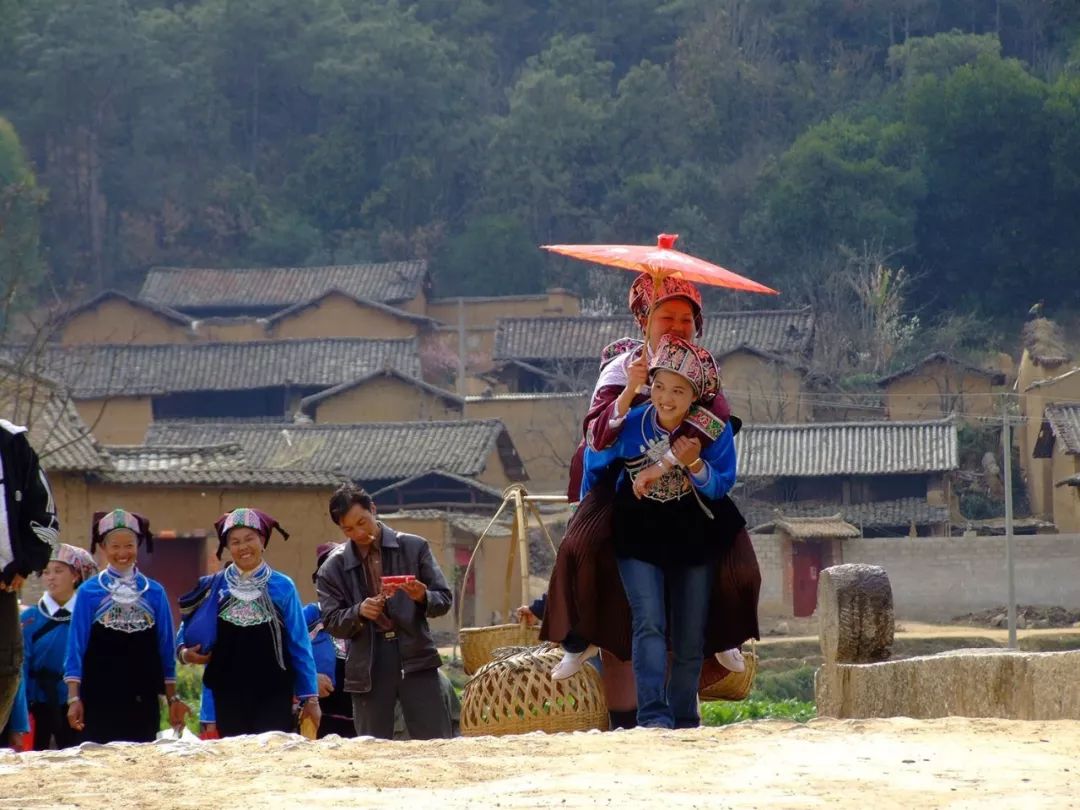
▲The distinction and integration of casual clothes and traditional bird clothes is most obvious in this piece. The bride on the back wears a modern version of the bird suit, while the rest of the family and friends wear casual, albeit lavishly decorated, clothes. Taken in Hongdian Township, Wenshan City in 1998
The tailed bird clothes represent the clothing characteristics of the Nong people to a certain extent.
The clothes of the Nong people are simple and elegant, and the decorations such as silver ornaments are not complicated.
The use of silver is mainly in silver collars, silver necklaces and silver buttons.
Of course, with the changes of the times, many “silver ornaments” today obviously only use the shape of “silver” and do not have the quality of silver.
The most obvious distinction among the Nong people is the headgear. Generally speaking, the headgear of Nongyang and Nongjiu imitates buffalo horns; those of Nongdao and Nongdai (both in Guangnan County) imitate yellow ox horns; It is a mutated “buffalo horn”.
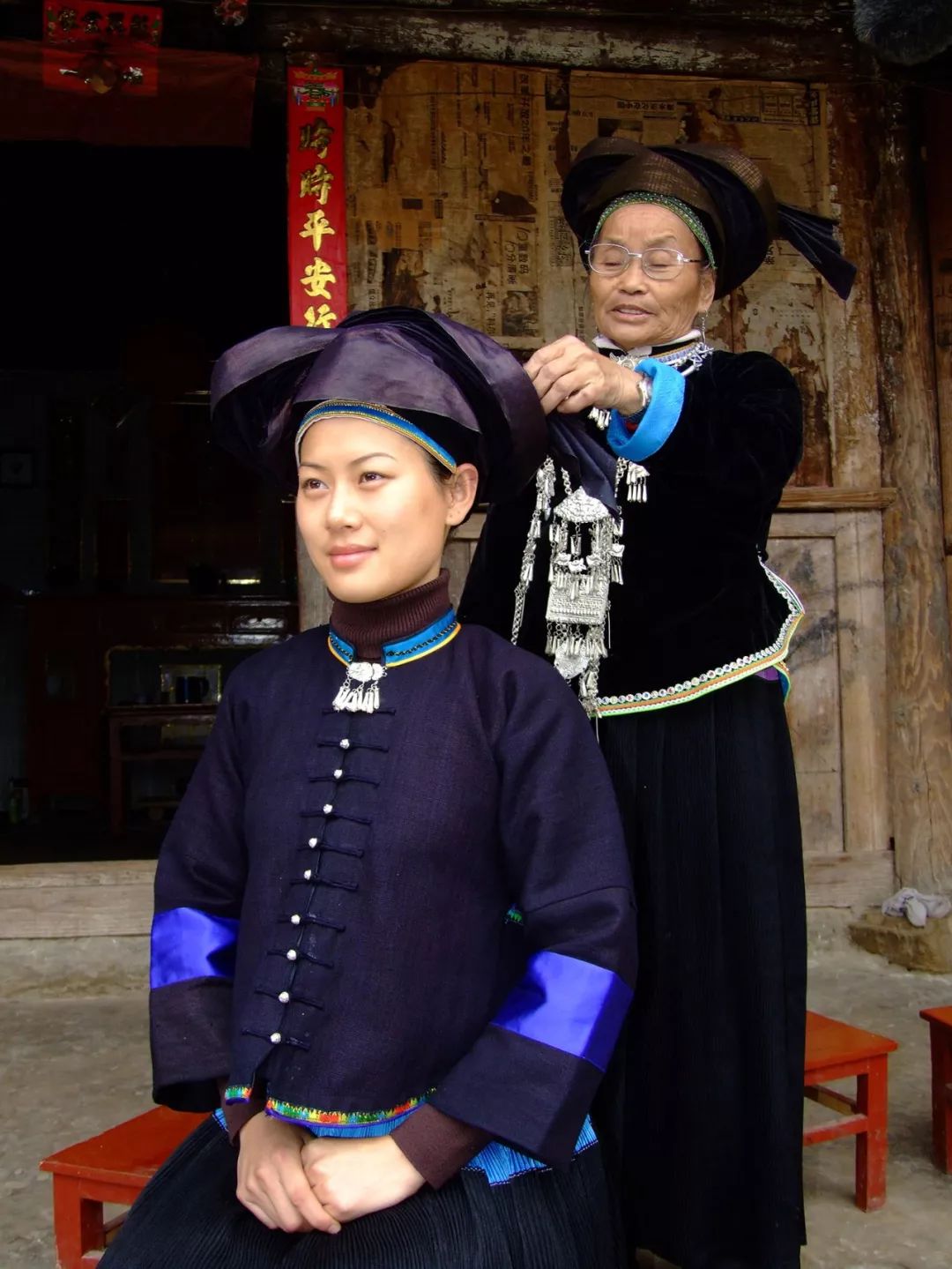
▲The Nong people are divided into 5 ethnic groups (branches), the most obvious distinction is the headgear. Nongyang and Nongjiu’s head scarves are mainly made of buffalo horns. The picture shows Nong Yang headdress. Taken in Shangguo Village, Xichou County in 2006
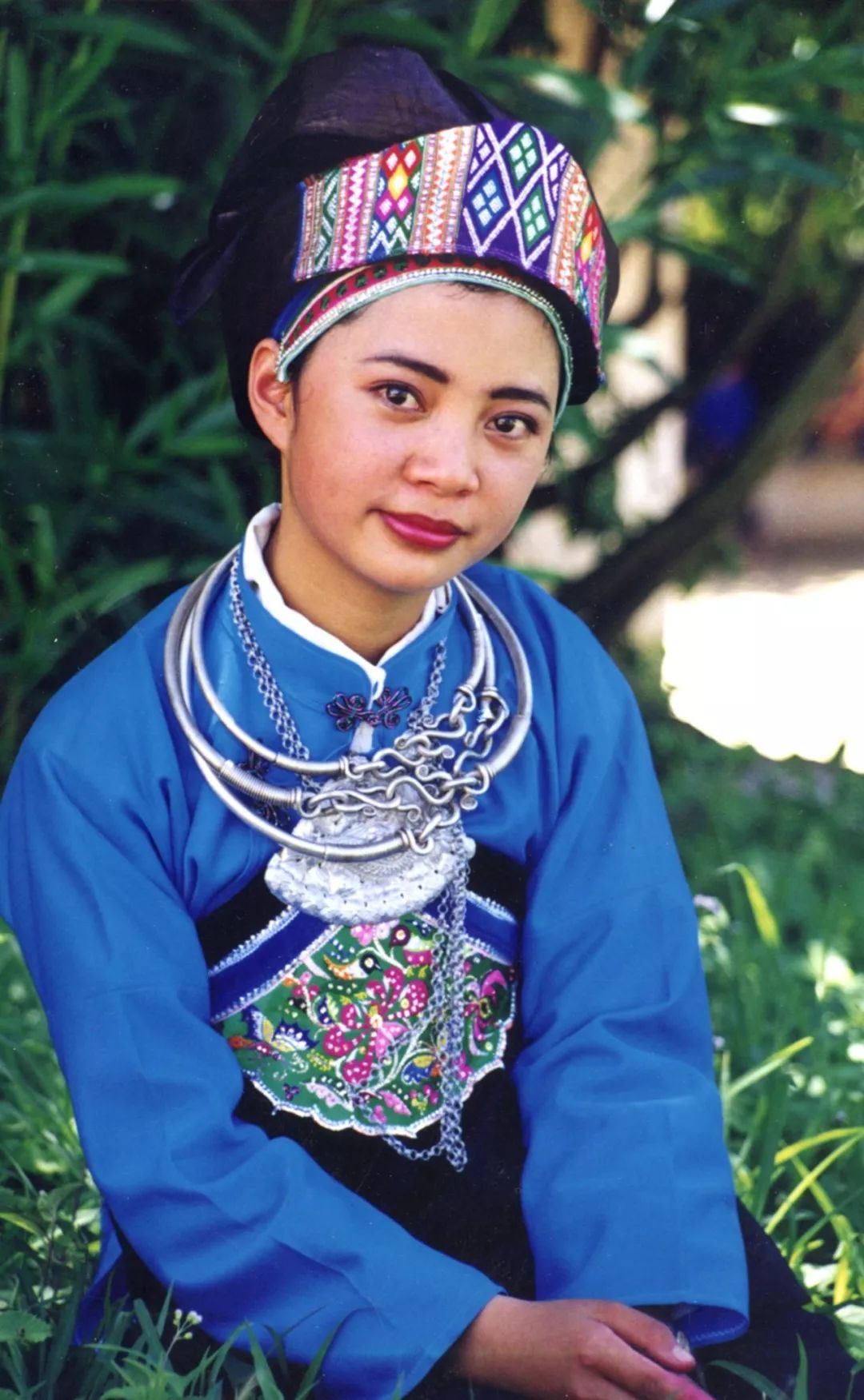
▲The Nongyang headdress is also shown in the picture, but the brocade decoration is added to the “buffalo horn” headkerchief, which is also a very traditional technique. Taken in Dehou Township, Wenshan City in 1997
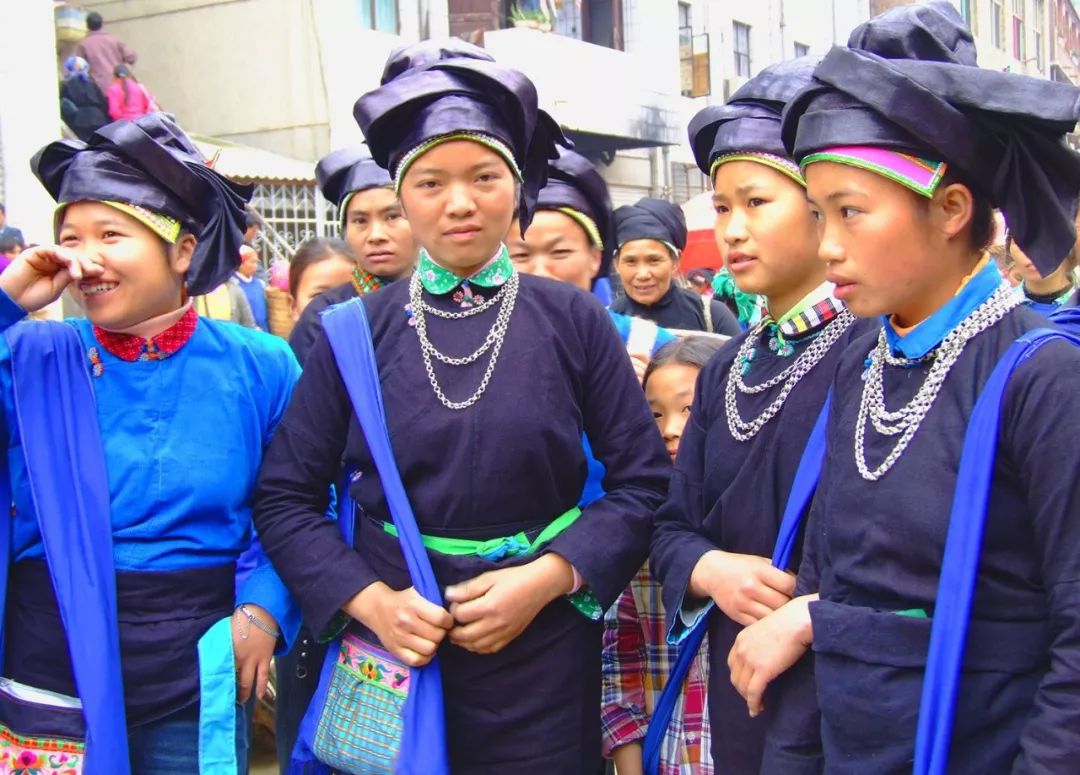
▲The head scarf of the Nongjiu branch has the characteristics of Nongyang, but the length is not as long as Nongyang. The picture shows Babu Street in the Sino-Vietnamese border area. The “dove” people from China and Vietnam have been here since ancient times to communicate and trade. Taken at Babu Street, Malipo County in 2007
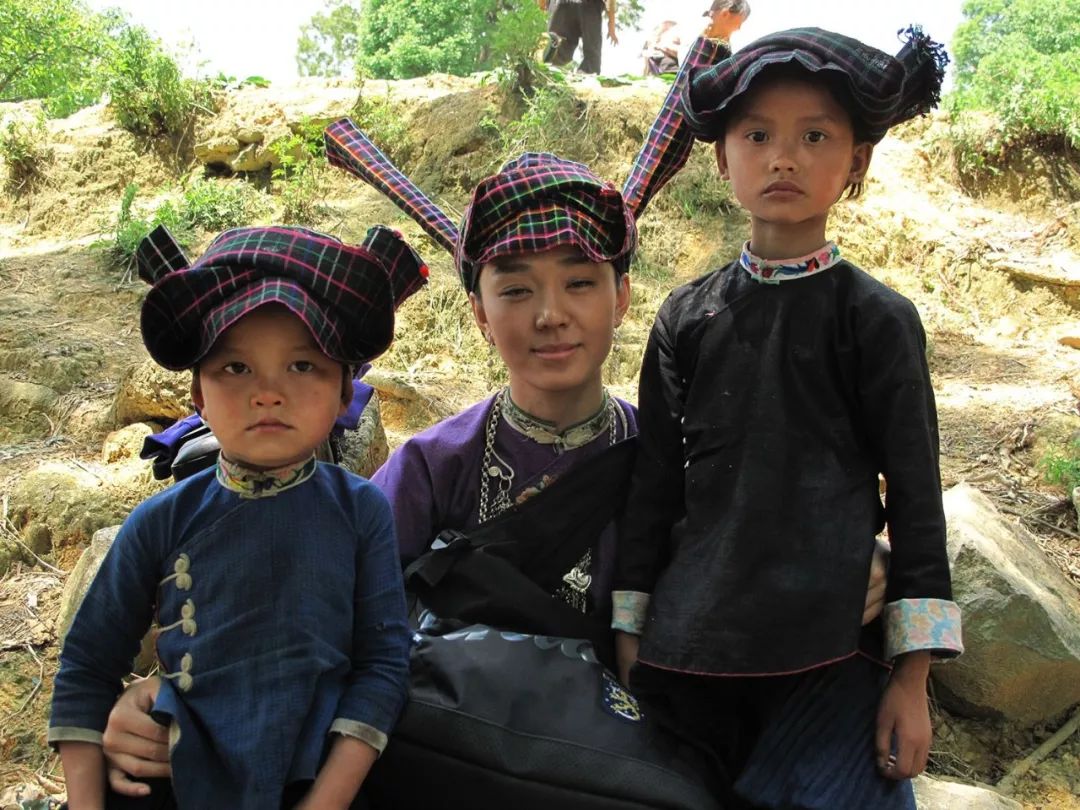
▲Nong Dao and Nong Dai headdresses in Guangnan are basically the same, they all imitate yellow ox horns. The picture shows Nong and Dai headdresses, taken in Fazao Village, Zhetu Township, Guangnan County in 2008
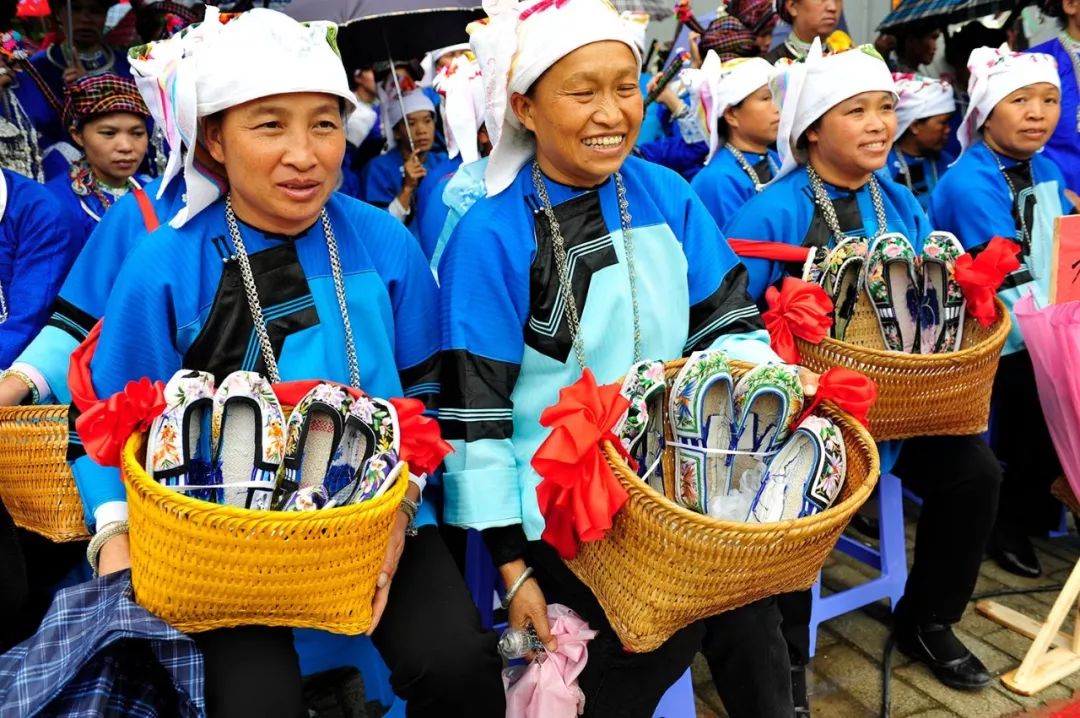
▲Nong Dao’s headdresses have other styles besides the traditional “yellow ox horn” style. For example, in the picture, a towel is directly used to cover the head. This method is said to be that when Manchu officials in the Qing Dynasty brought their families to Guangnan to work, these Manchu women taught Nong Tao women to wrap their headdresses, but they didn’t learn well. After the Manchus left, they didn’t know how to wrap their heads, so they used towels to cover their heads, and it has been passed down to this day. . Taken in Liancheng Town, Guangnan County in 2007
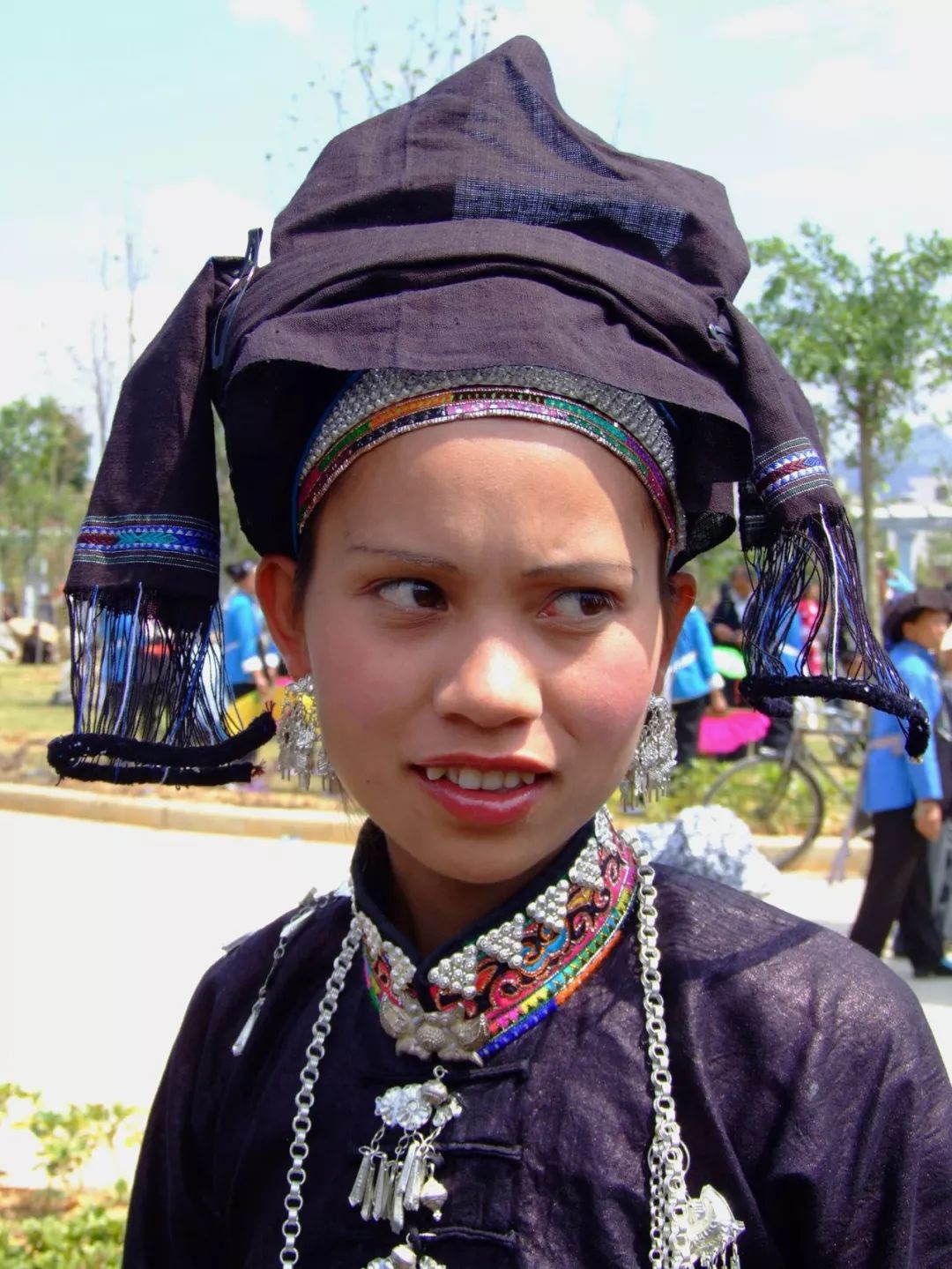
▲Nongdu’s headdress is quite special, it is a mutated “buffalo horn”, which retains some of the characteristics of buffalo horn, but it is different from the “buffalo horn” of Nongyang and Nongjiu. The picture shows the girl’s headdress of Nongdu in Maguan County, which still retains the characteristics of two horns. Taken at the March Festival in Maguan County in 2008
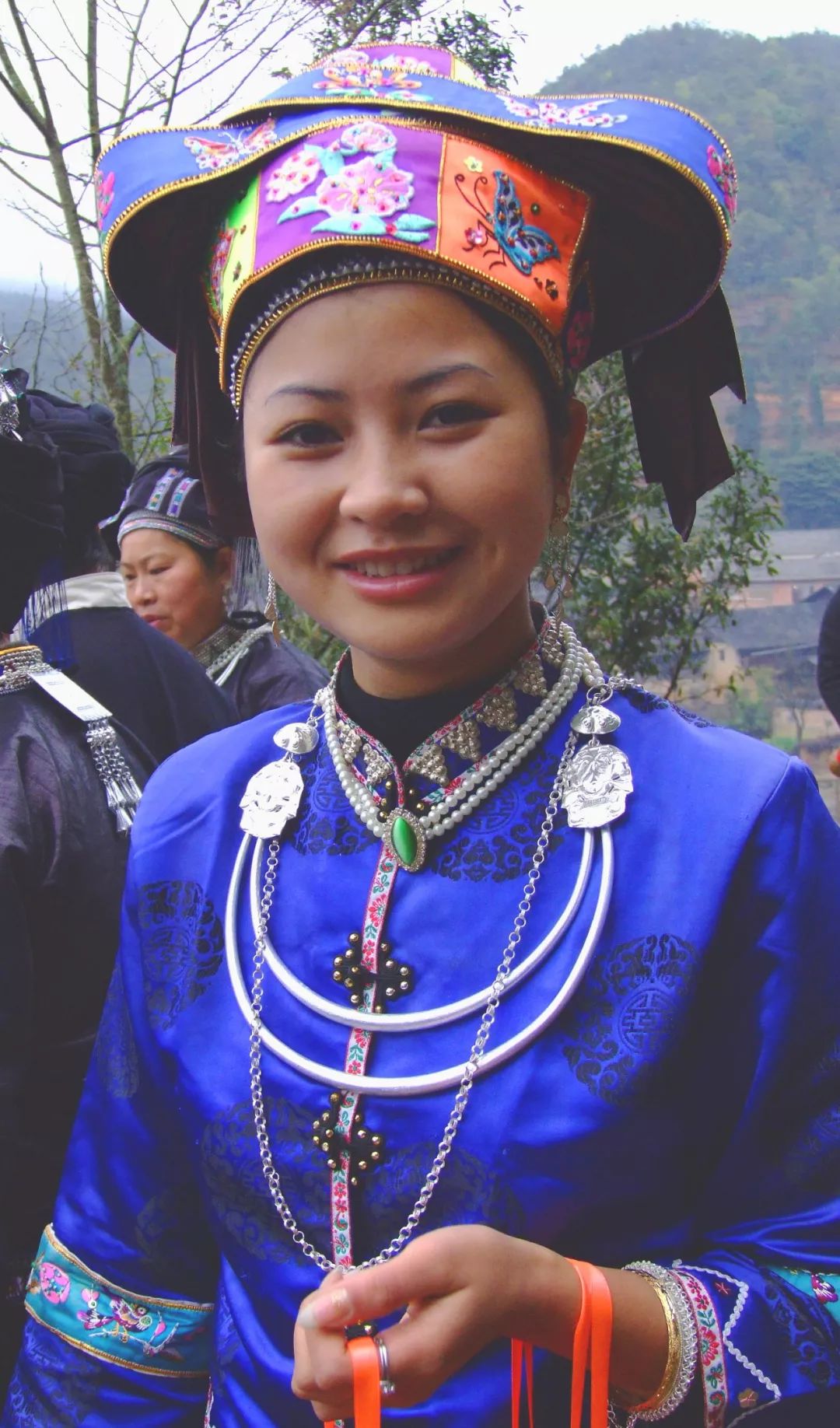
▲The costumes of different branches and regions of the Nong people have developed to this day, and there is a trend of integration. The picture shows the headdress of Nongdu women in Maguan County, which has the characteristics of Nongyang and Nongdu, as well as the characteristics of Nongjiu. This is the new clothing of the Nung people. Taken in Masa Village, Maguan County in 2009
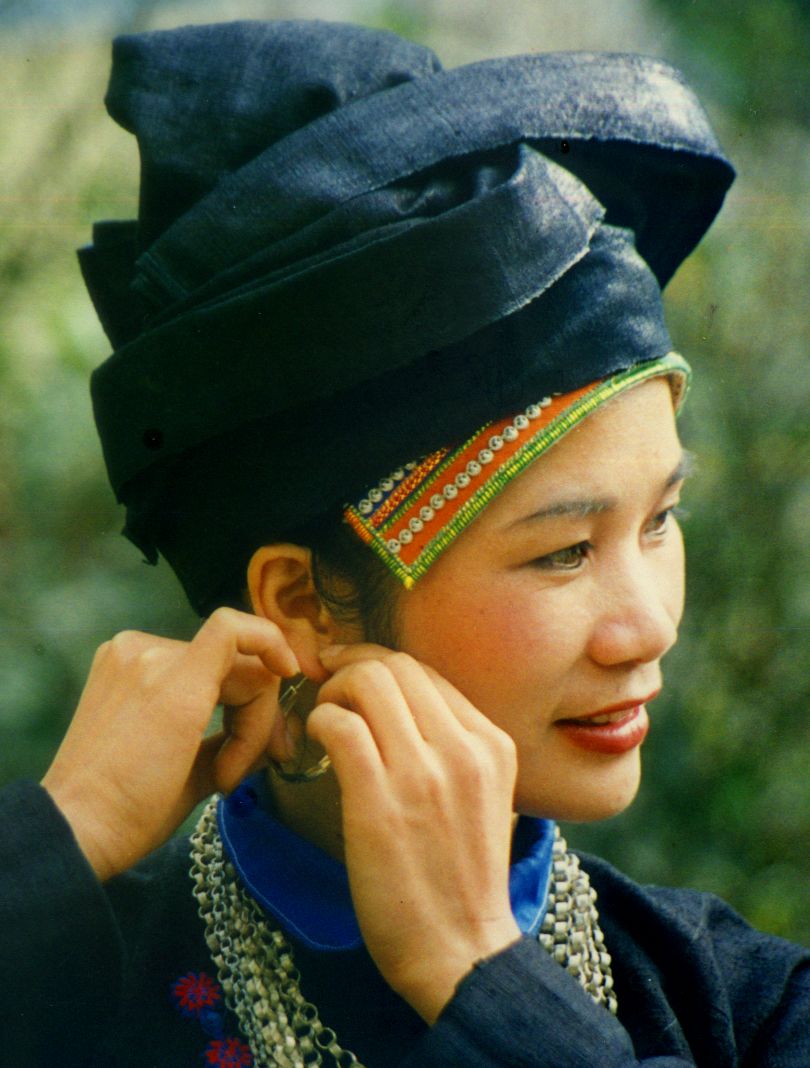
▲The costumes of the Zhuang nationality, the use of silver ornaments is relatively restrained. The picture shows the silver ornaments worn by Nongjiu women. Taken at the March Festival in Malipo County in 2008
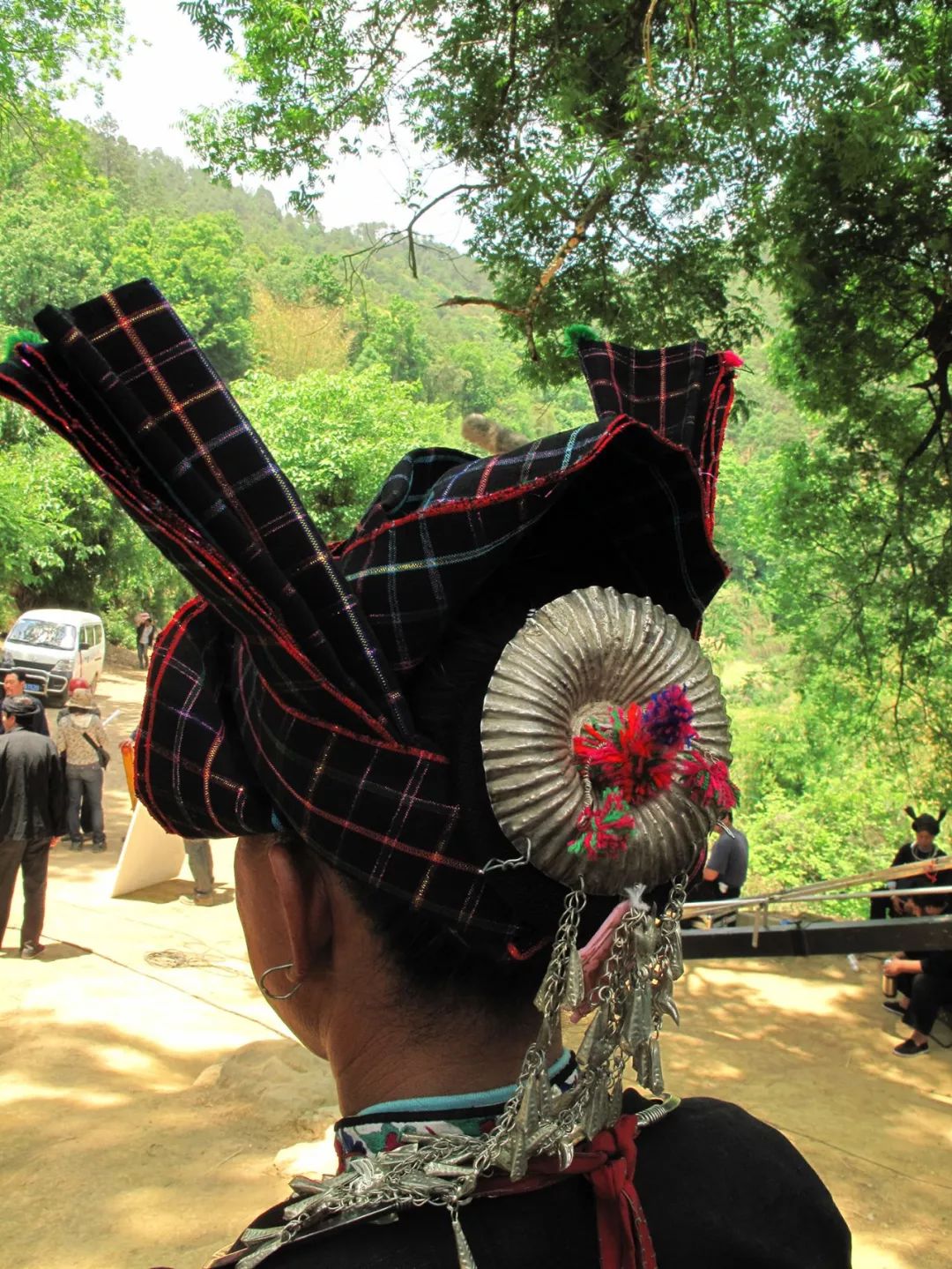
▲Silver ornaments on Nongdai hair buns, taken in Fazao Village, Zhetu Township, Guangnan County in 2008
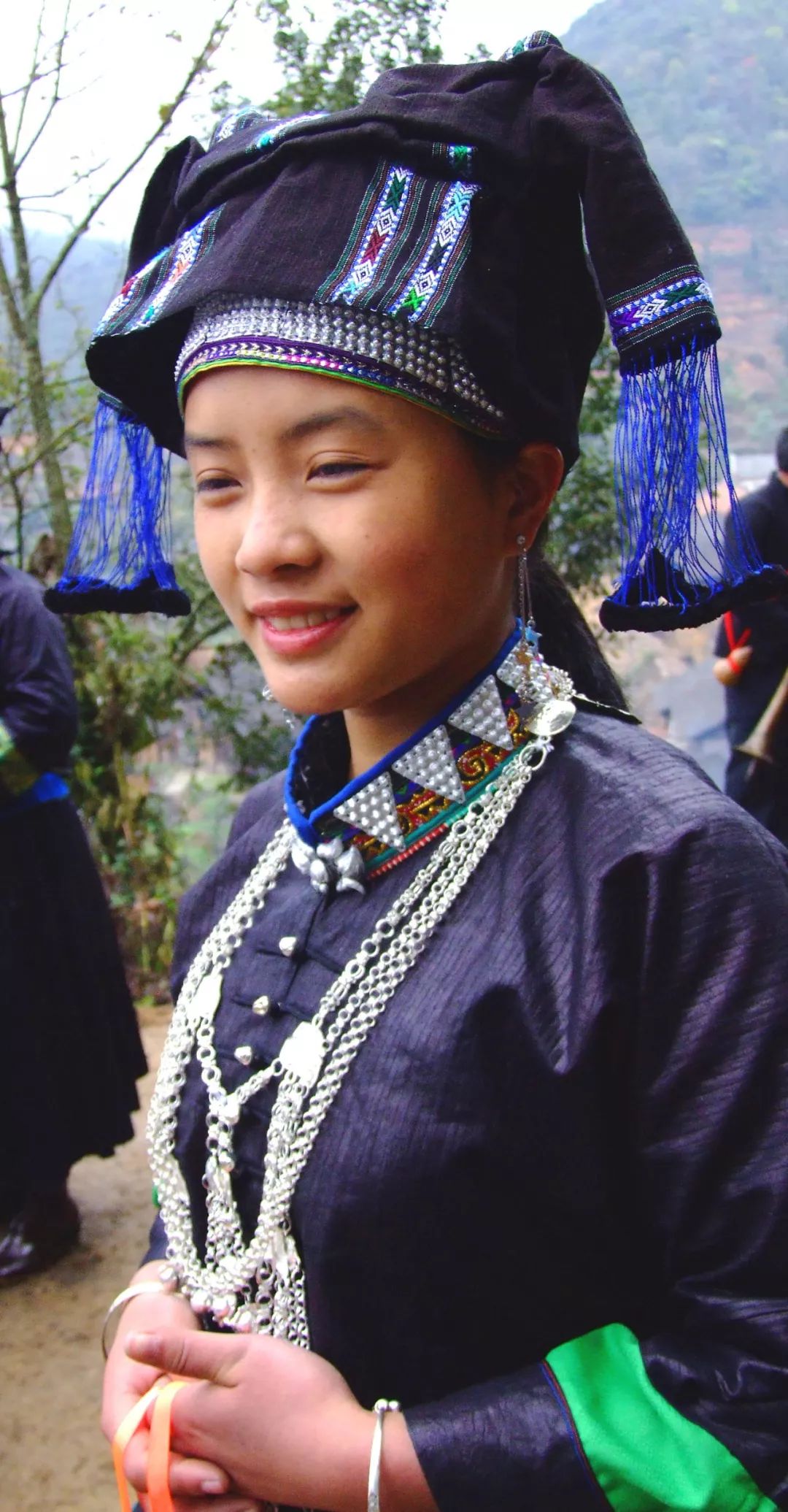
▲The silver collar and silver buckle of Nong Du in the picture. As times change, silver materials are gradually replaced by other materials, but there is still a tradition of embodying silver jewelry. Taken in Masa Village, Maguan County in 2009
Sha branch, from Guangxi and Guizhou

THE COLLATERAL SERIES IS FROM GUANGXI AND GUIZHOU
Sha, he said, is divided into two small branches, living in Funing County and Qiubei County respectively. The population accounts for about 30% of Wenshan Zhuang.
The Sha branch in Funing County calls itself “Buyue” (or “Buri”), with a population of about 200,000.
The Sha branch in Qiubei County calls itself “Buyi” (or “Buyi”), with a population of more than 100,000.
1. Buyue
The branch calling itself “Buyue” should have moved in from Guangxi. The more powerful evidence is the route of sending souls at their funerals. The Sha branch died of old age, and the souls of the undead had to be sent to the ancestral homeland in Guangxi and then sent to the “fairyland”.
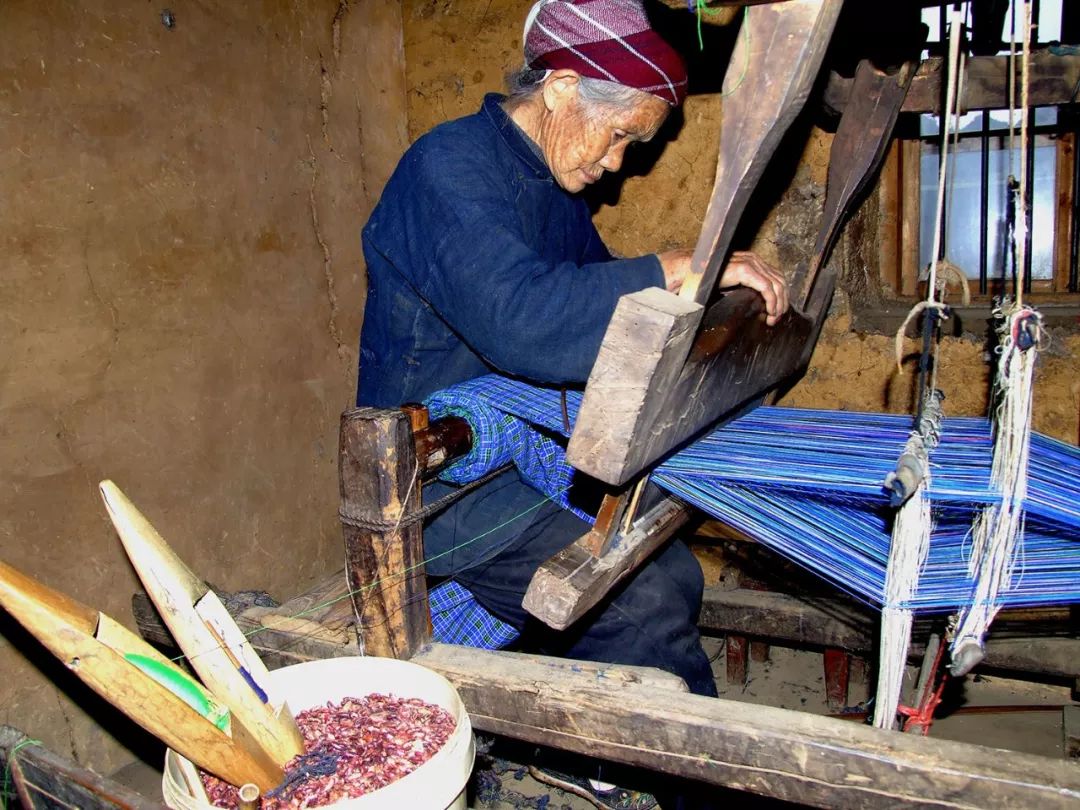
▲The Buyue people of the Sha branch of the Zhuang nationality in Wenshan Prefecture have inherited superb weaving skills. The pedals of the loom have developed from two to six pedals, and the cloth weaves is thick and colorful. Taken in Guichao Town, Funing County, 2006
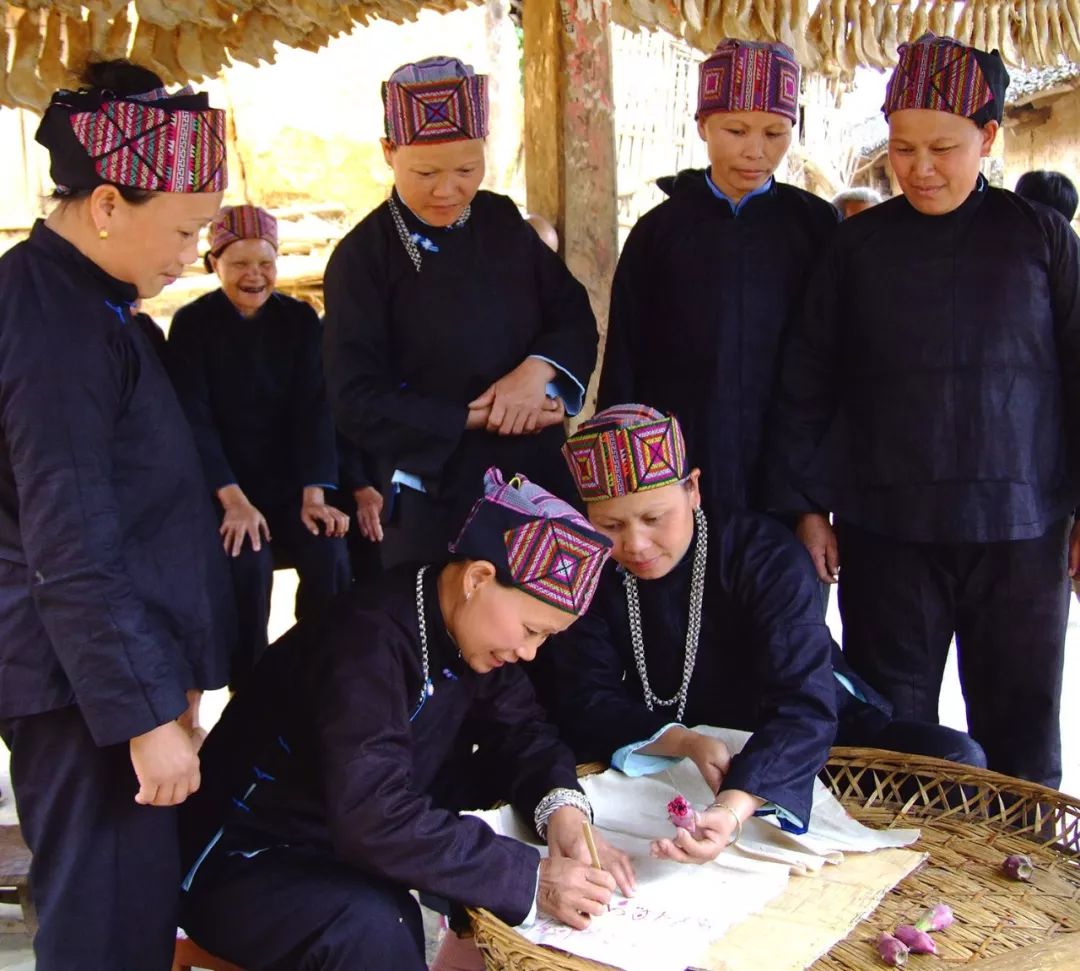
▲Shazhi is the clothing of the Buyue people, and the headgear is easier to identify. This is a relatively traditional costume of the Zhuang nationality in Funing County, and the headdress retains the characteristics of Zhuang brocade. In the picture, women are writing song books. This “song book” consists of 81 pictorial characters. Taken in Poya Village, Funing County in 2007
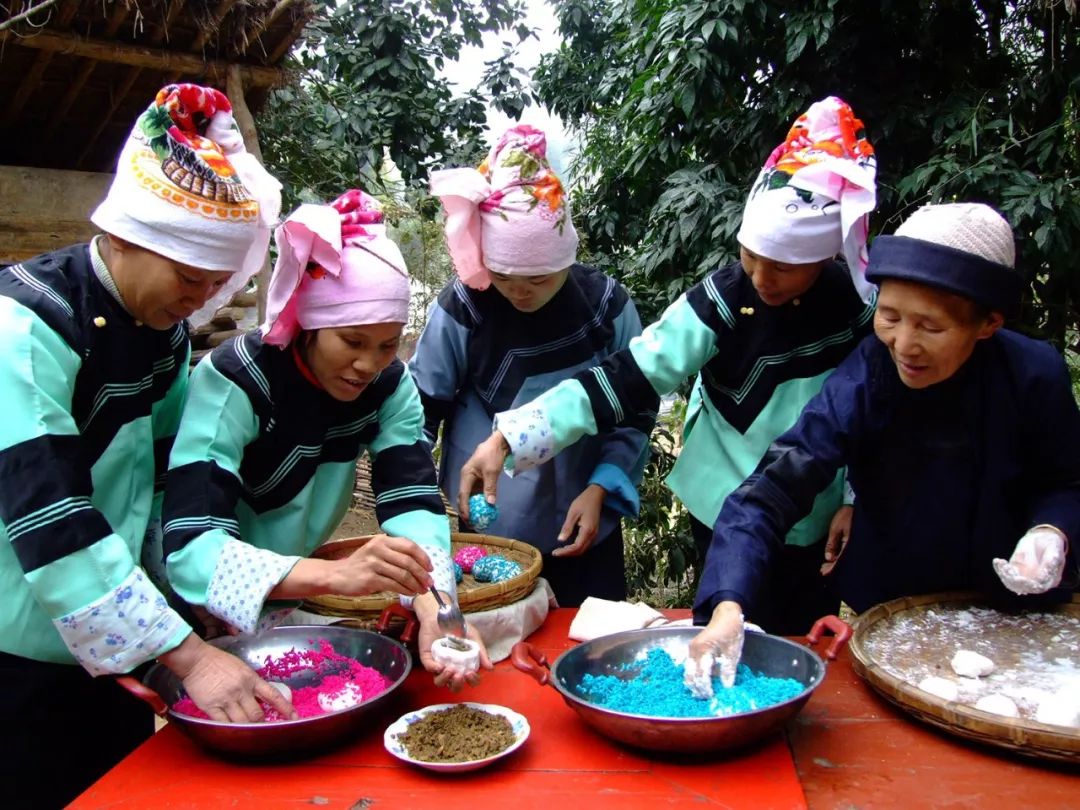
▲The Sha branch (Buyue people) distributed in Bamei Township, Guangnan County has different headgear from the Buyue people in Funing area. They wrap their heads with handkerchiefs. In addition, the Buyue people here are integrated with the customs of the original ethnic group “Nongdao”, and their clothing and living customs have the characteristics of the Buyue people and the “Nongdao” people (see the previous issue). Taken in Bamei Town in 2007
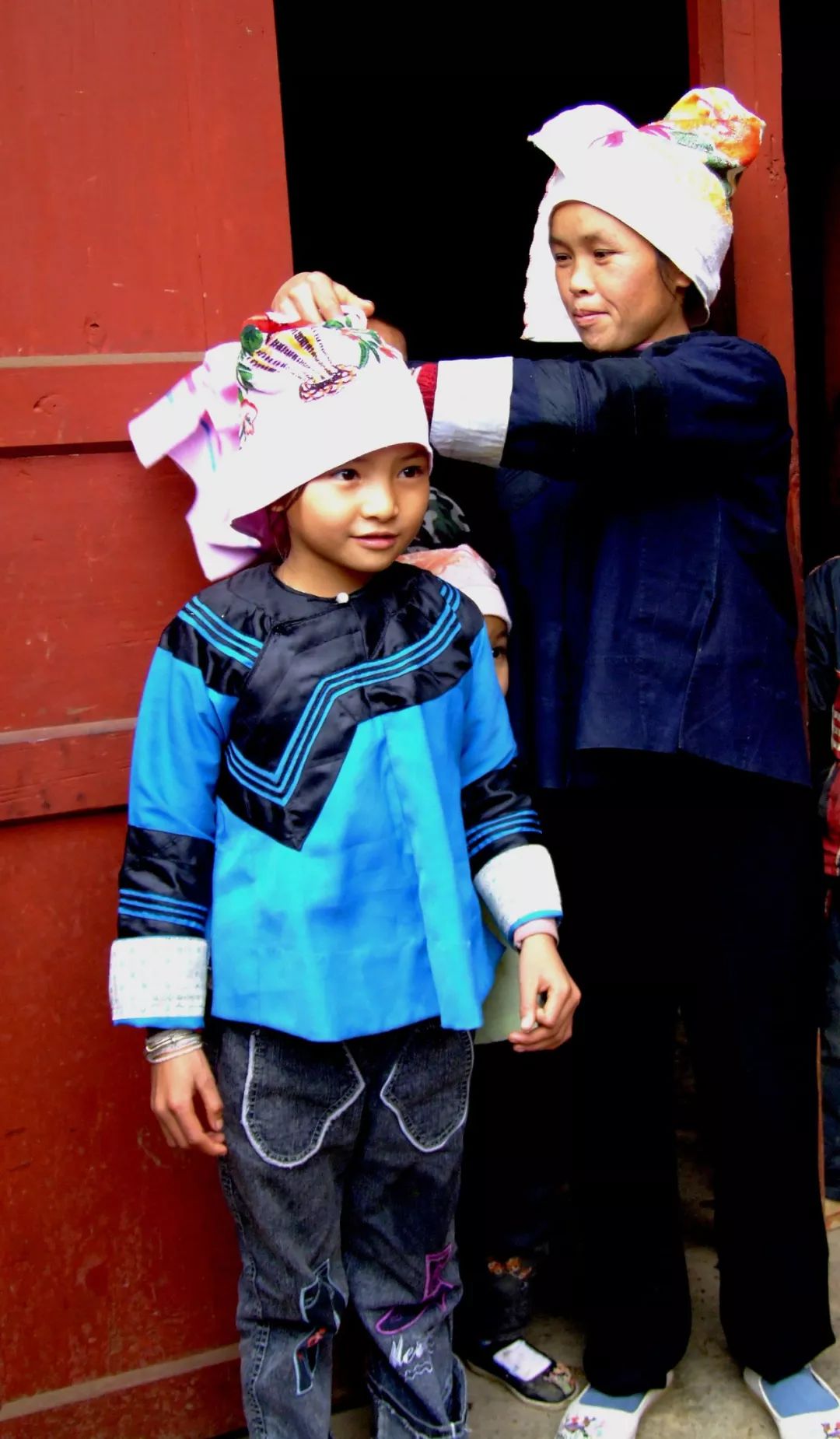
▲Little girls of Buyue people in Guangnan also wrap their heads with handkerchiefs like adult women. The costumes of Buyue people in Bamei and Babao in Guangnan are similar. Taken in Bamei Town, Guangnan County in 2007
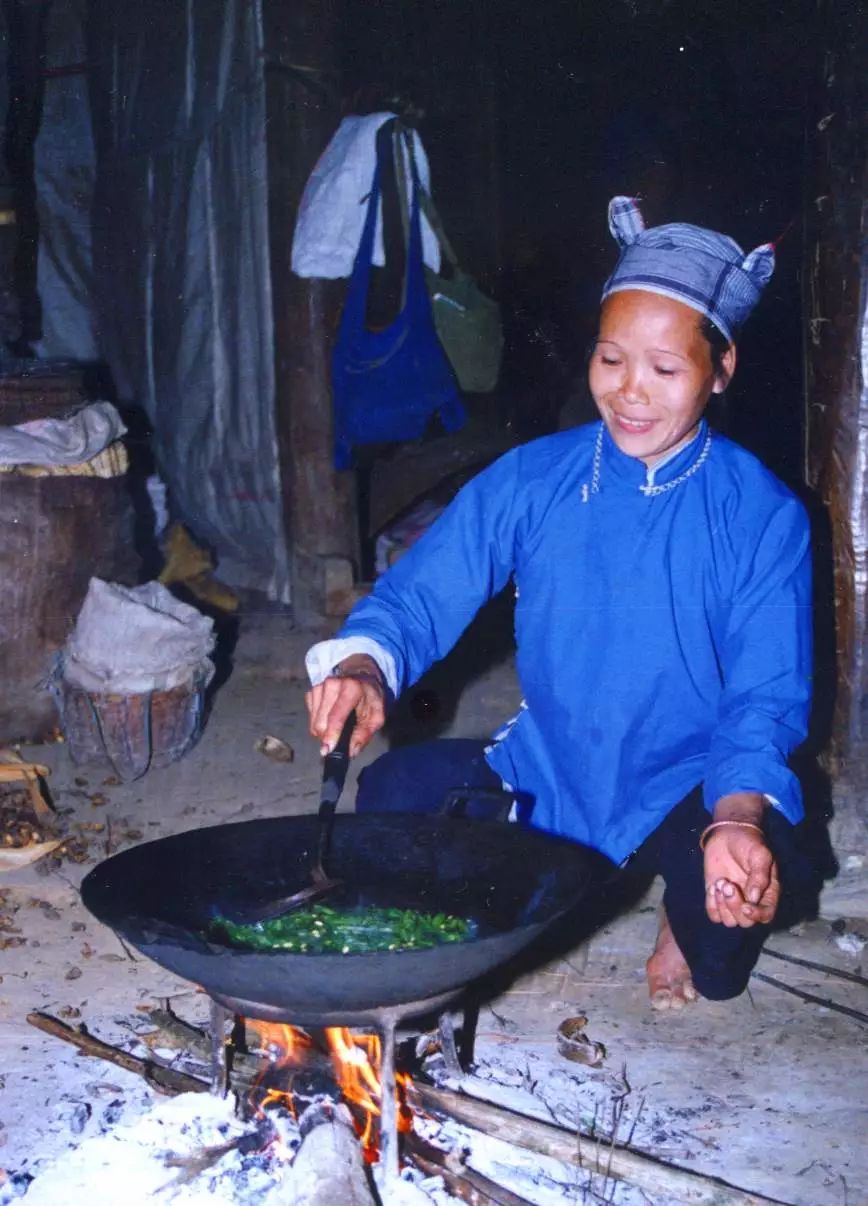
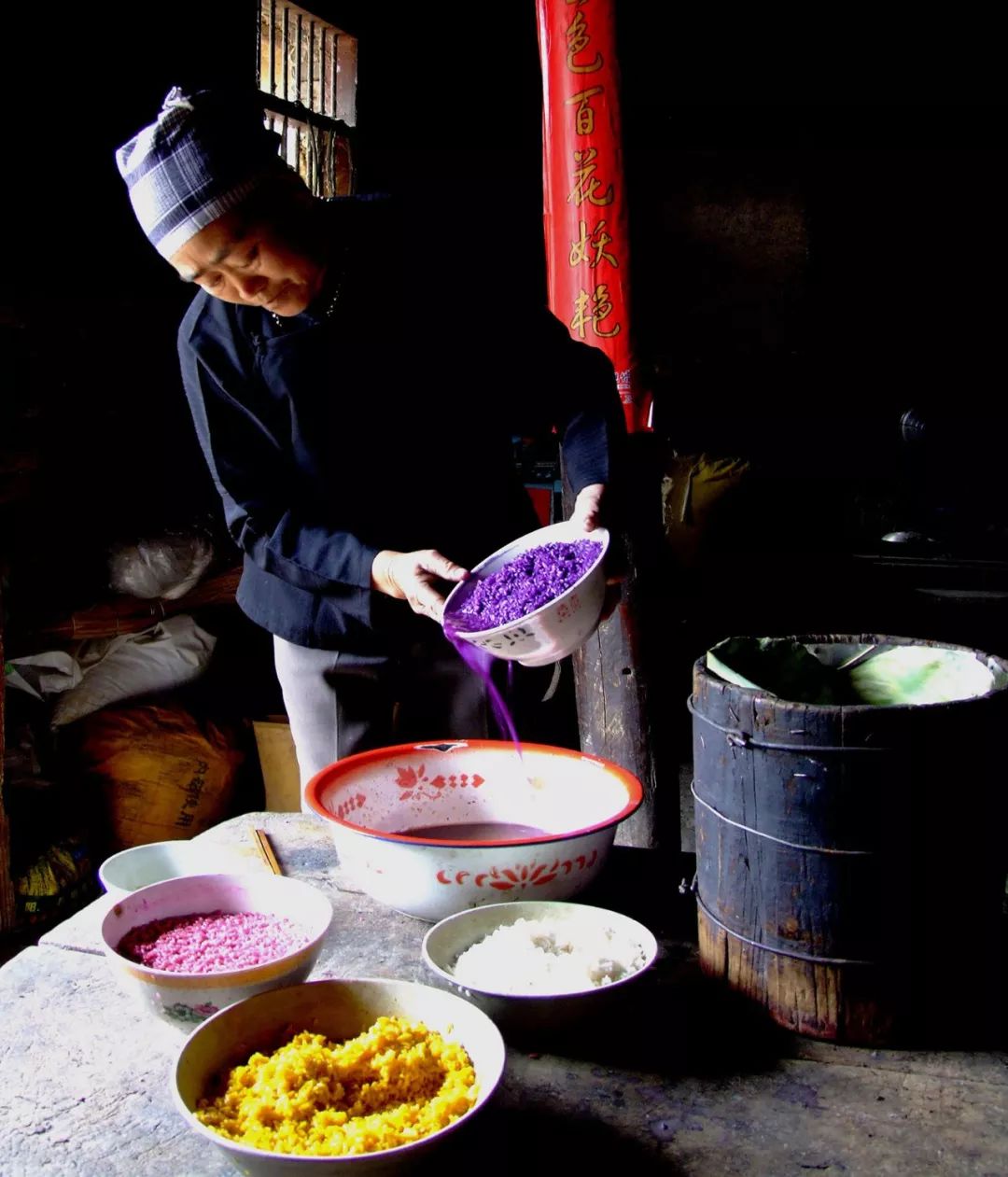
▲The Buyue people in Funing also have their heads covered with a head scarf. It’s just that the material of Baotou is slightly different from that of Guangnan. The picture above was taken in Zhesang Township, Funing County in 1998; the picture below was taken in Guichao Town, Funing County
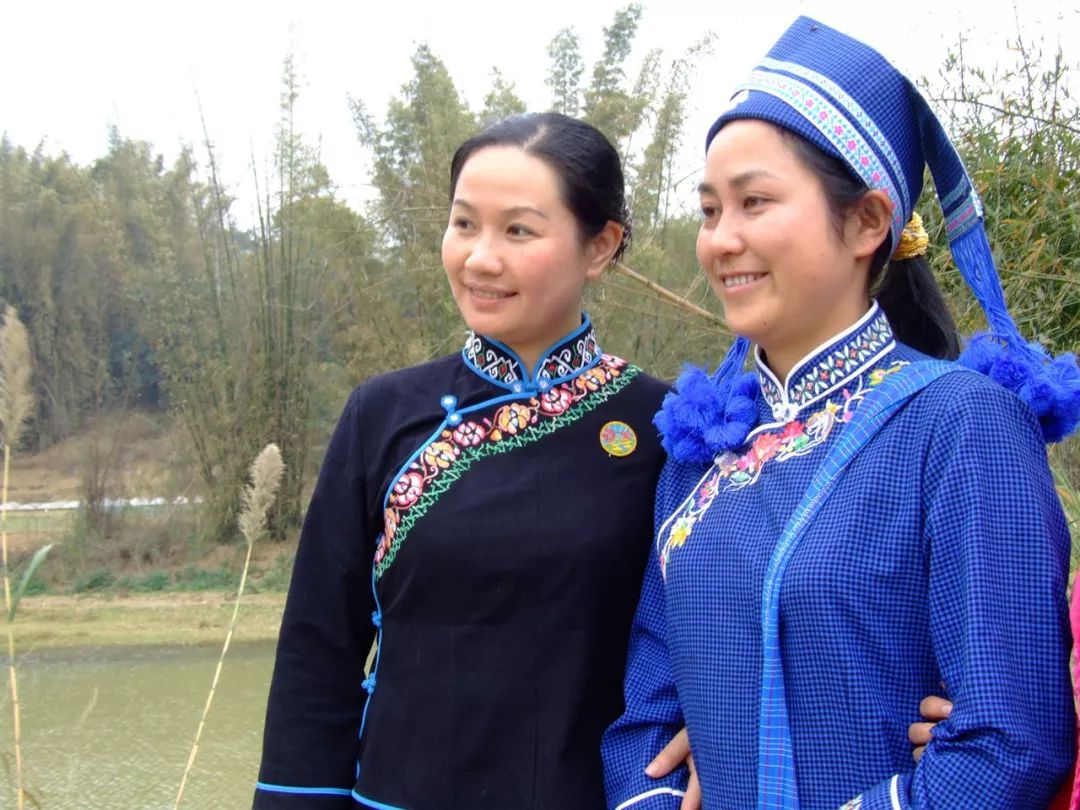
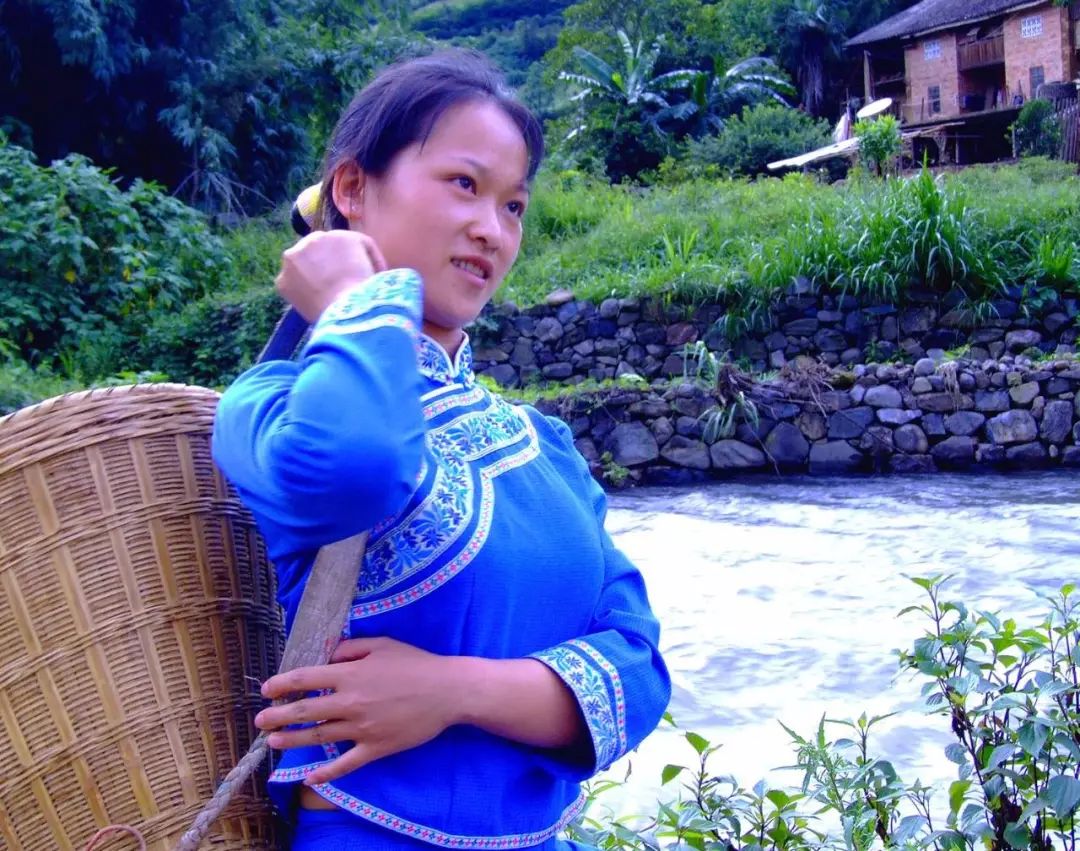
▲The costumes of Buyue people have changed significantly in the past decade or so. National costumes change in tradition. Part of the tradition is preserved, and new costumes are created by absorbing the traditional costumes of the Han nationality and other ethnic groups. On the picture is the Buyue people in Guichao Town, Funing County (photographed in 2006); the picture below is the Buyue people in Xinhua Town, Funing County (photographed in 2006), Han costumes mixed with lace
2. Buyi
The small branch that calls itself “Boyei” should have the same origin as the Buyi people in Guizhou Province, and gradually merged into today’s Zhuang people after moving to the Wenshan area.

▲Shazhi is the traditional casual clothing of the Buyi people. The Sha branch of the Zhuang nationality in Wenshan Prefecture is what he said. Others believed that they were descendants of the Shadingzhou troops in the late Ming and early Qing Dynasties and called them the “Sha tribe”. Descendants of the Continental Troops), should be of the same origin as the Buyi people in Guizhou. The picture shows the rice transplanting ceremony. On the first day of planting rice, a beautiful woman must be selected to insert the first rice seedling, which is a metaphor for the unlimited reproductive ability of rice seedlings. Photographed in Guanzhai Township, Qiubei County in 2006
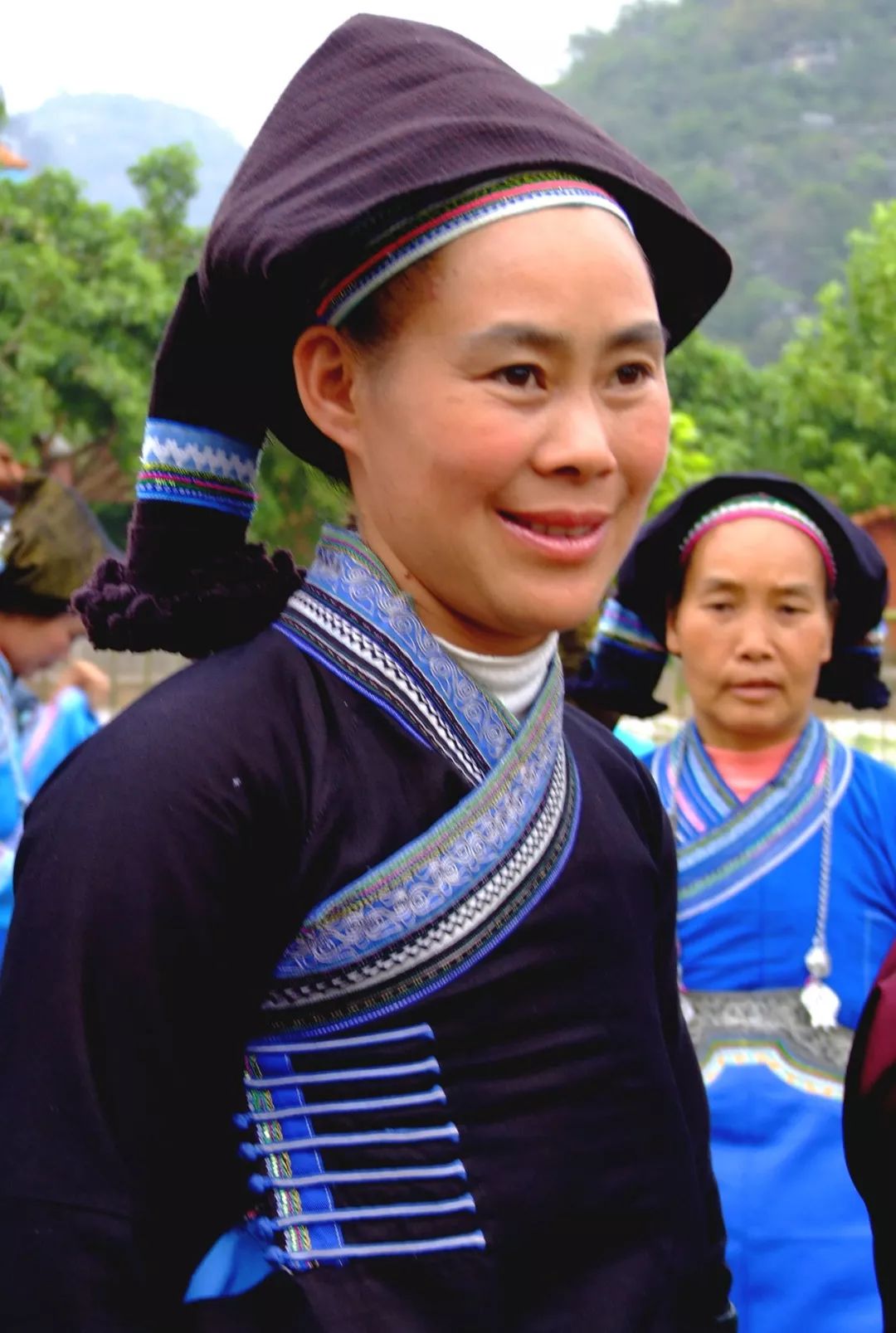
▲This is also the traditional casual clothes of the Buyi people. Taken in Pingzhai Township, Qiubei County in 1999
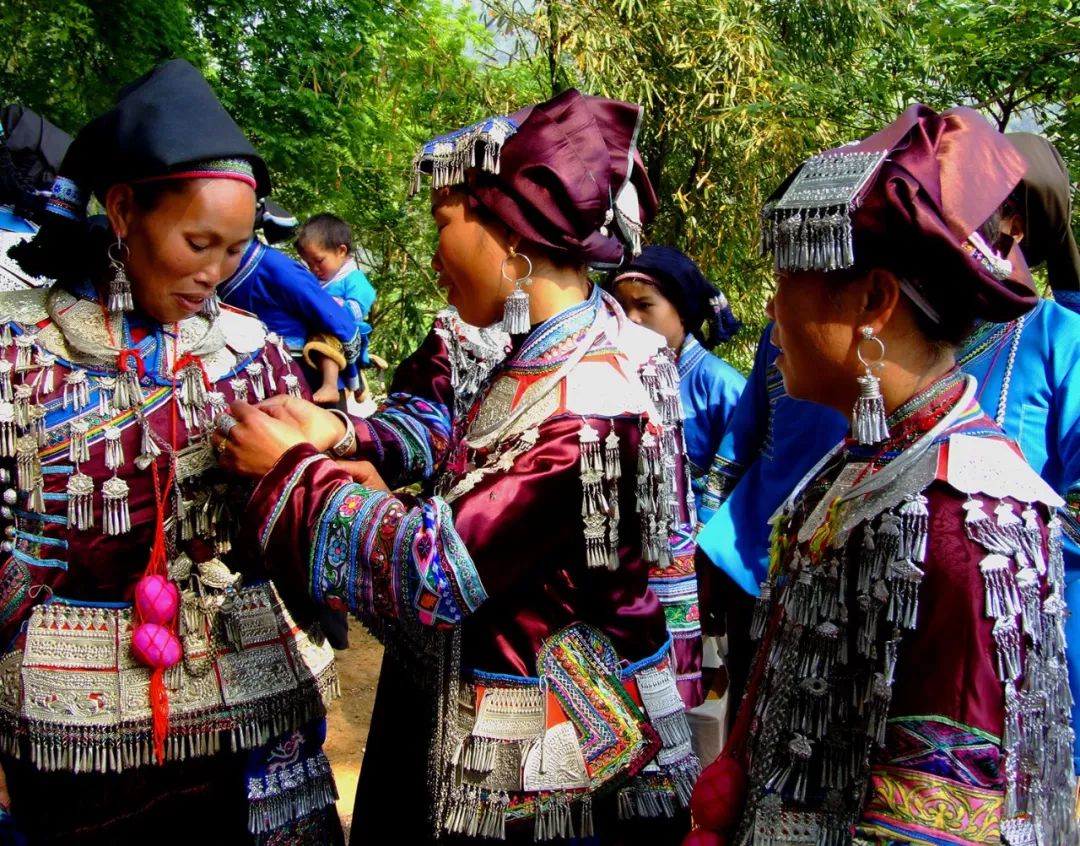
▲The costumes of the Buyi people are embellished with silver ornaments. In Wenshan Zhuang costumes, the use of silver ornaments is relatively restrained. Buyi people use the most and are the easiest to identify. Photographed in Guanzhai, Qiubei County in 2007
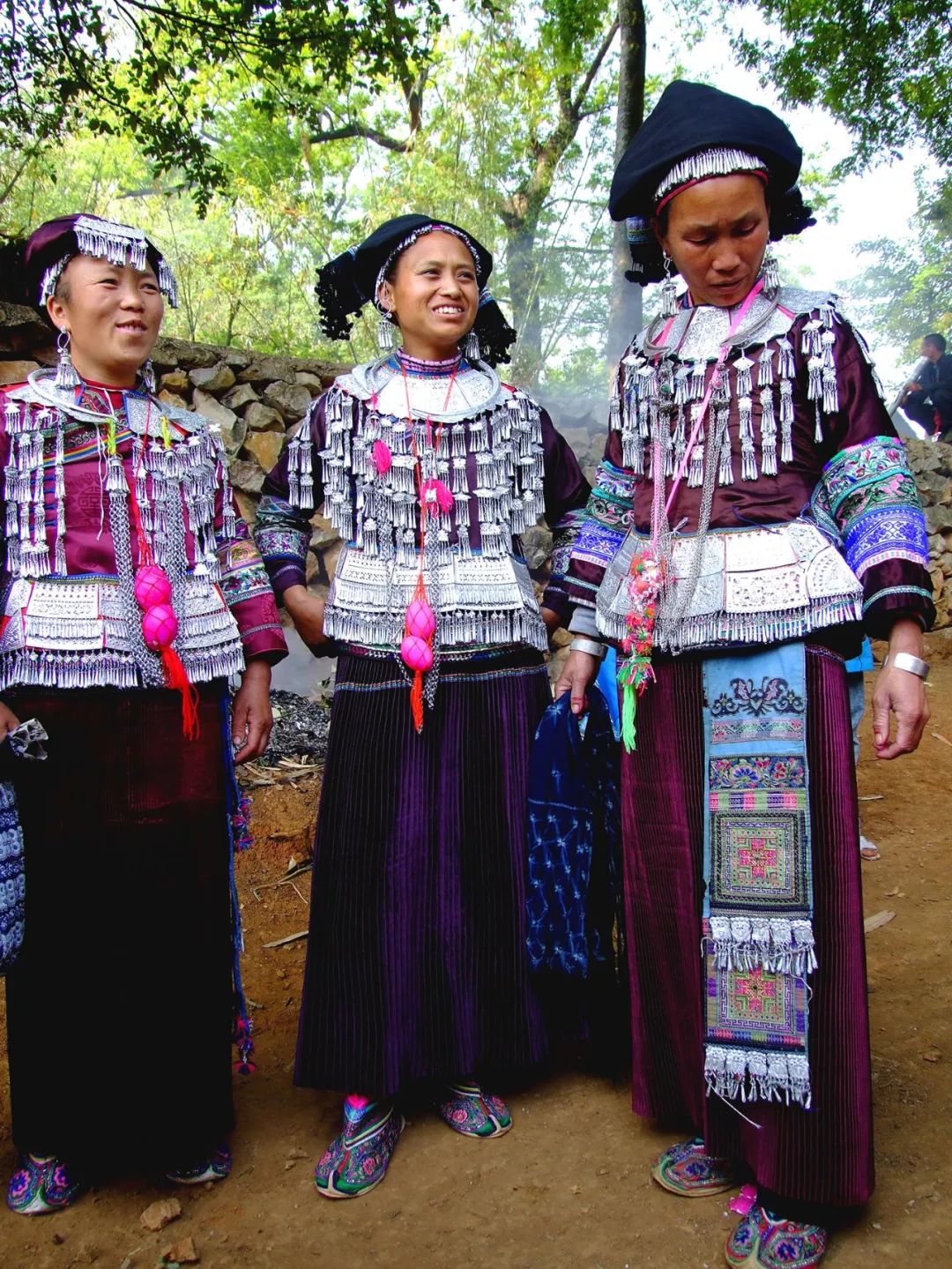
▲In addition, the silver ornaments of the Bouyei people are said to retain the traces of their ancestors’ early battles – the silver ornaments are shaped like armored battle robes and bow and arrow bags. Taken in Pingzhai Township, Qiubei County in 2007
In terms of clothing, the early women’s clothing of the “Buyue” branch mostly used self-woven blue and blue cotton cloth, but the styles were mixed with Han clothing in the Qing Dynasty, and the traditional Zhuang brocade pattern was still retained on the head scarf.
The women’s clothing of the “Boyei” branch retains the traditional self-woven blue cotton cloth. The style is a fusion of the early Buyi and the Zhuang Pu’nong branch in the Wenshan area, and has the characteristics of the traditional Buyi and the traditional Pu’nong.
The difference between “Boyei” costumes and other branches of the Zhuang nationality is that they are embellished with silver ornaments, and still retain the characteristics of the shoulder armor and body armor of the “military uniform” of the ancestors.
Soil branch, from Sichuan?

THE TU COLLATERAL SERIES, PERHAPS COME FROM SICHUAN
According to the oral history and ancient books and picture books of the Tuzhi branch, its ancestors settled in the Wenshan area after cooperating with the Han army in the southern expedition in the early days. Tan Leshui, a documentary director in Yunnan, said that the Tu branch probably came from Zigong, Sichuan, and said that their costumes are evidenced by the portrait bricks of the Han Dynasty.
The soil branch is mainly distributed in the three counties (cities) of Yanshan, Wenshan and Maguan, with a population of about 100,000.
The soil branch calls itself “Bu Dai” and “Bu Dai”. However, they are generally divided into four branches based on the characteristics of clothing and head scarves: “flat head soil”, “tatou soil”, “pointed head soil” and “biatou soil”.
1. Flat soil
“Pingtoutu” concentratedly settled on both sides of the Panlong River in Wenshan City. There are 49 villages. Now only 3 villages retain their original ecology, and the rest of the villages have become high-rise buildings.
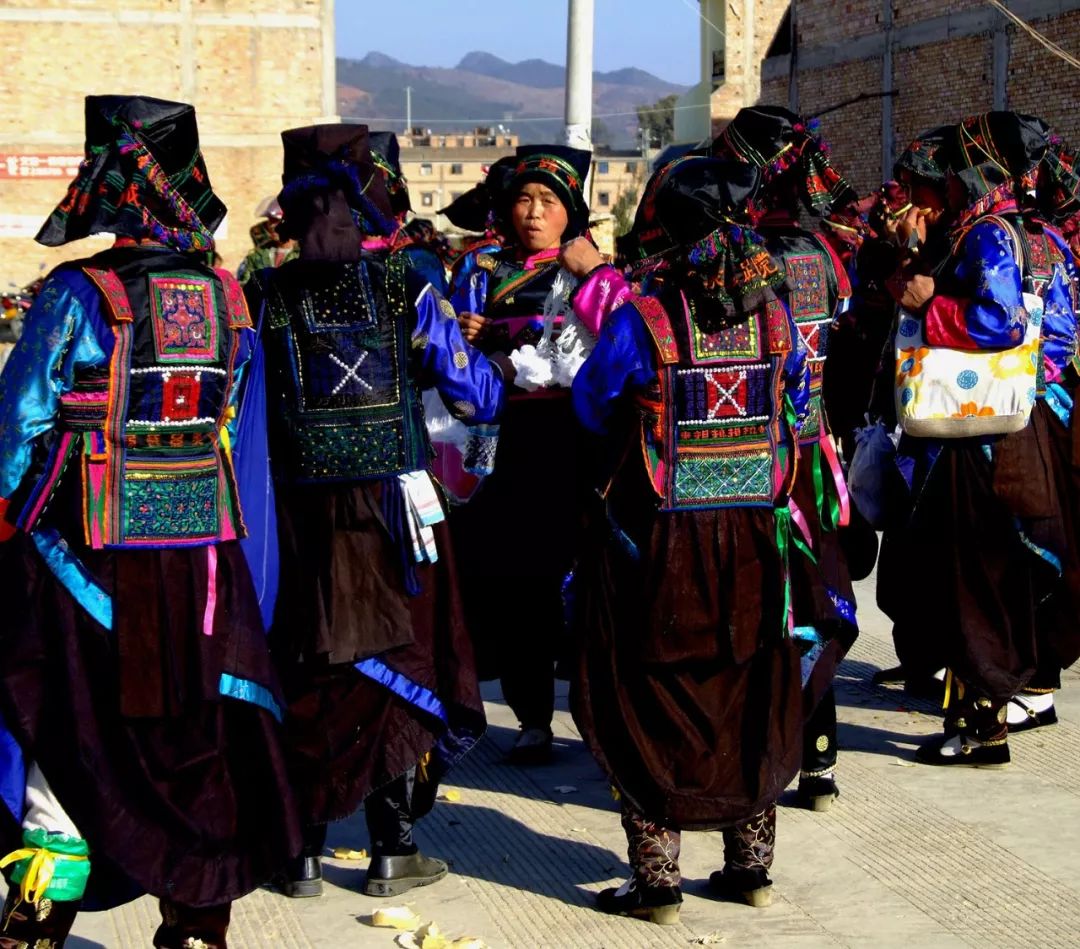
▲Pingtou soil in the soil branch, the “buzi” on the back is like a seal, which is said to symbolize the seal bestowed by the ancient emperor. Pingtoutu is a descendant who came to Wenshan Prefecture to cooperate with the Han army to fight. The clothing culture is a product of some possible history. Taken in Gaomo Village, Wenshan City in 2006

▲In recent years, Pingtou soil’s clothing has also made some changes on the basis of retaining the original style. The hat on the picture is embroidered with Chinese characters, which is the current practice. This feature is also a point that is relatively easy to recognize in today’s flat-headed soil clothing. The picture shows that flowers are picked for the cattle on the Ox King Festival in October every year. Taken in Gaomo Village, Wenshan City in 2012
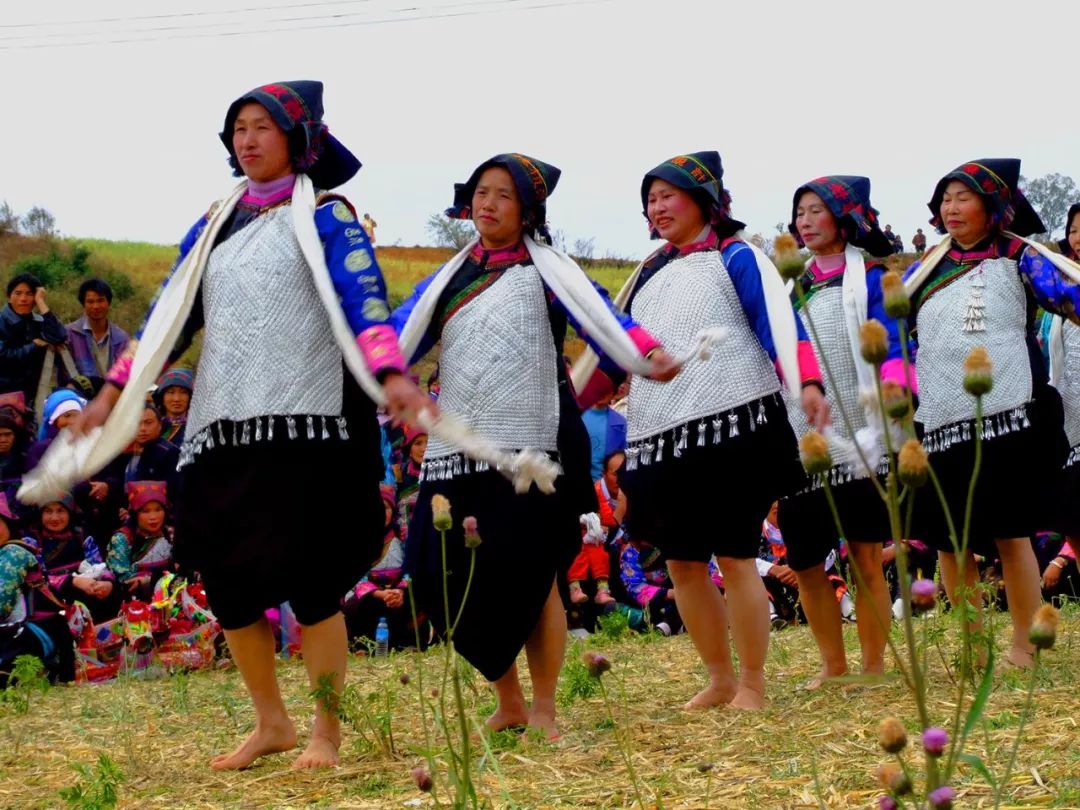
▲This is also flat-headed clothing, with silver bubbles on the chest. Pingtoutu has a rich clothing culture. When women get married, they should prepare 5 sets of different styles. The wedding ceremony will be held for 5 days and wear 1 set every day. Silver bubble clothes are only available to wealthy families. Photographed in Heika Village, Wenshan City in 2006
2. The branch of “Tatoutu” is distributed in Yanshan County and Wenshan City.
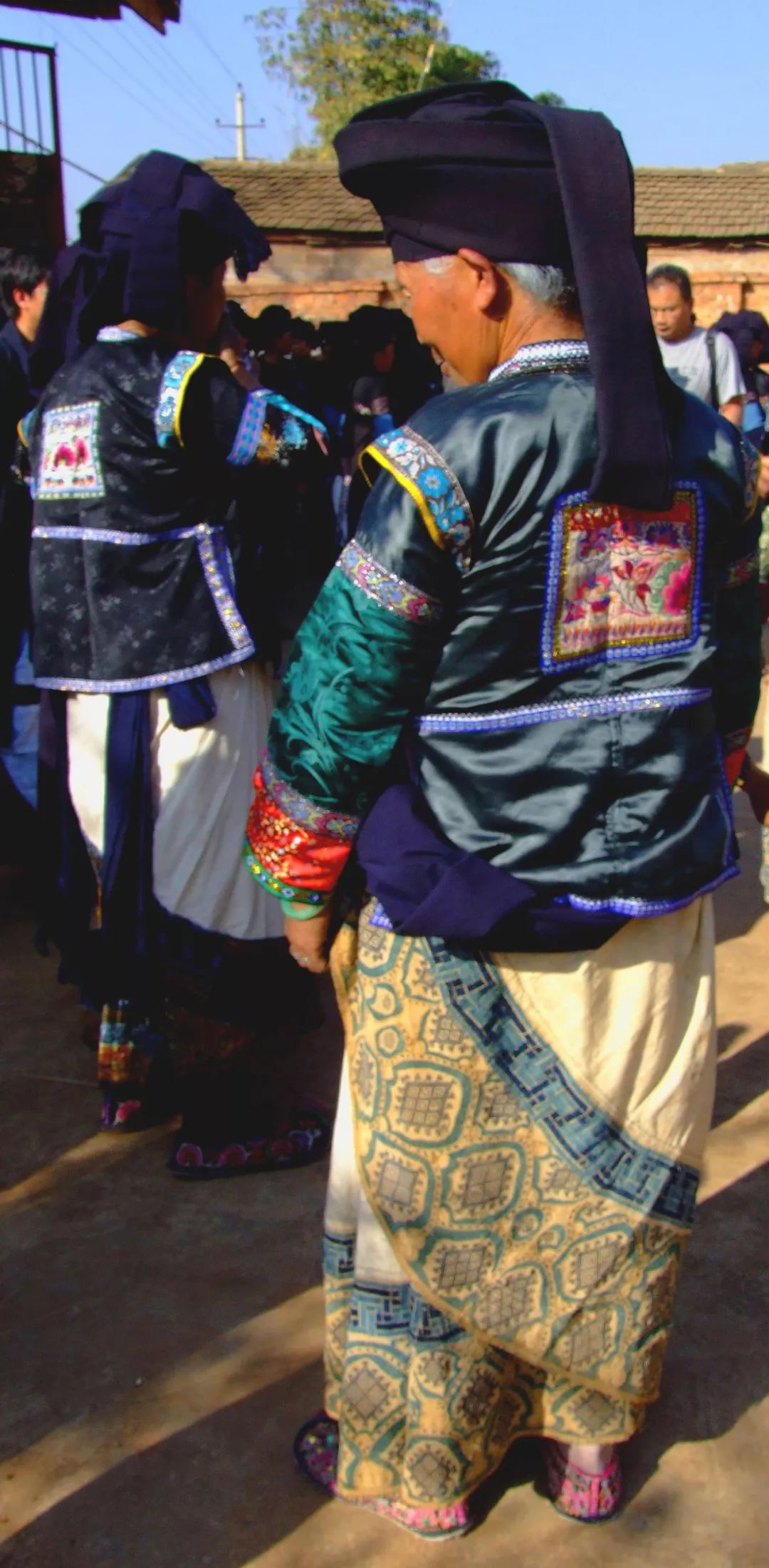
▲The patterns on the clothes of the tapou soil are similar to those of the Pingtou soil branch. The skirt is unique, embroidered with rice fields. At the elder’s death burial ceremony, the eldest son and daughter-in-law wore this skirt to measure the fields for the dead. Apparently, some ancient cultural concepts of Tatoutu are retained in their clothing. Taken in Pingyuan Town, Yanshan County in 2006
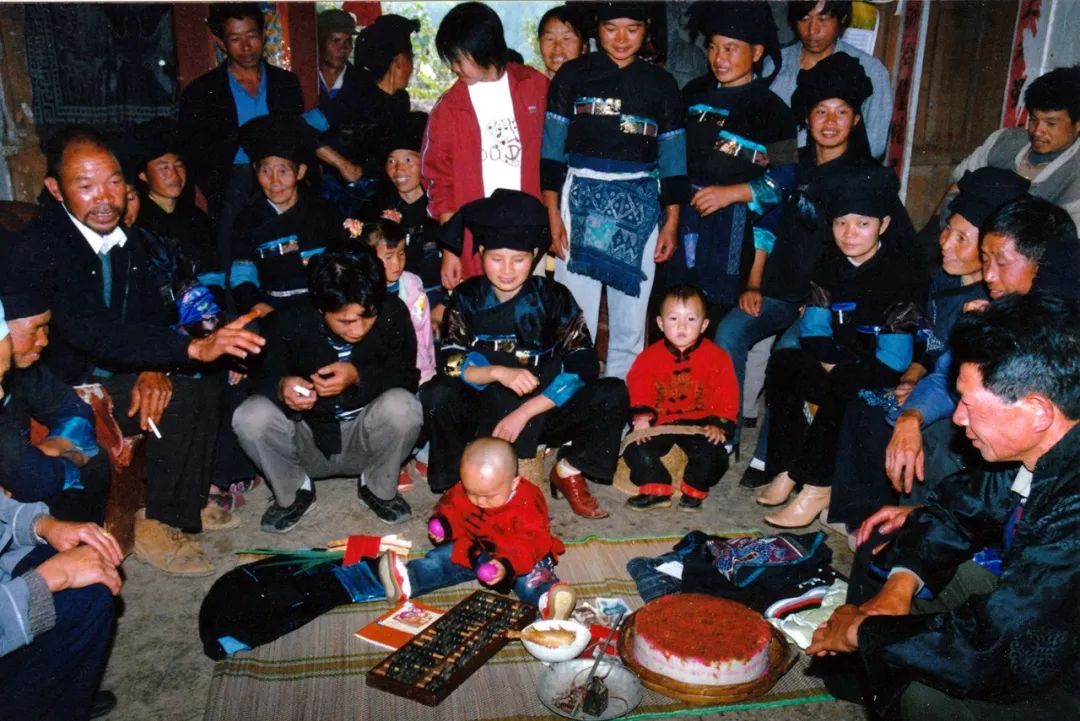
▲ Mix and match clothing with modern clothing. This is a family ritual situation where young women also wear traditional dress, usually skirts instead of trousers. Taken in Pingyuan Town, Yanshan County in 2007
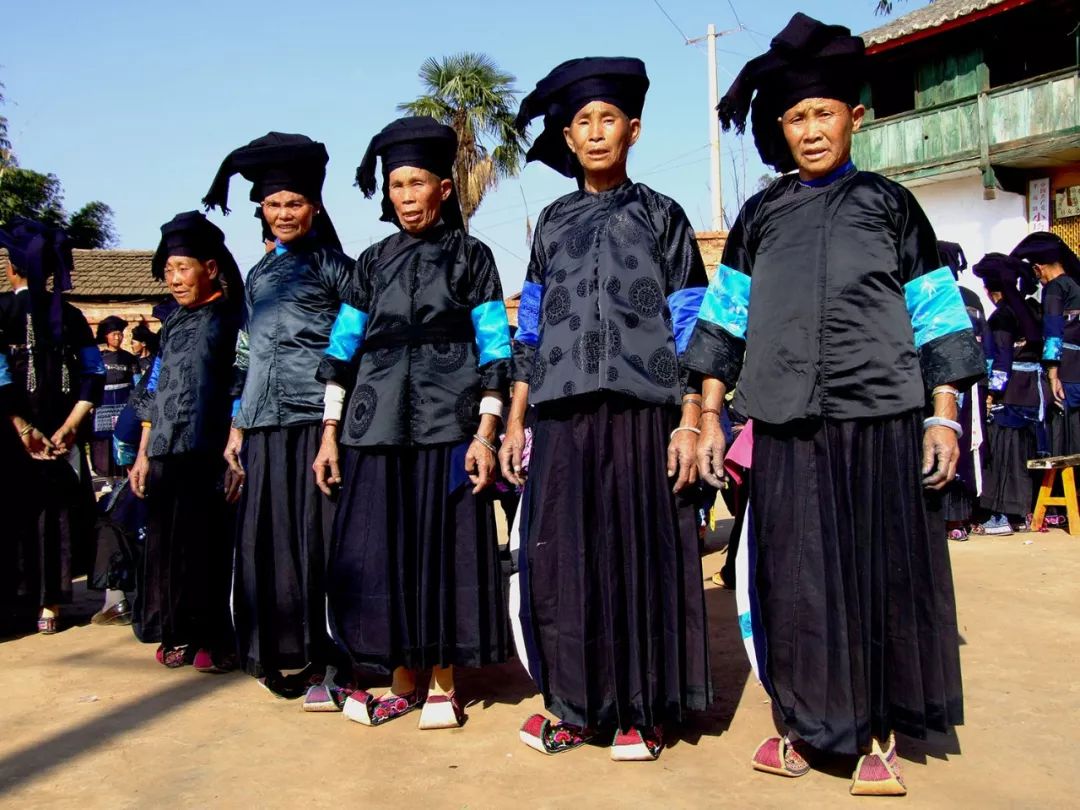
▲The traditional costumes of Tutu women, and the traditional boat-shaped shoes. Taken in Pingyuan Town, Yanshan County in 2006

▲Two pieces of specially-made embroidered brocade are bound on the chest and crotch of the women with their heads in the soil. The cultural connotation is yet to be studied. Taken in Pingyuan Town, Yanshan County in 2006
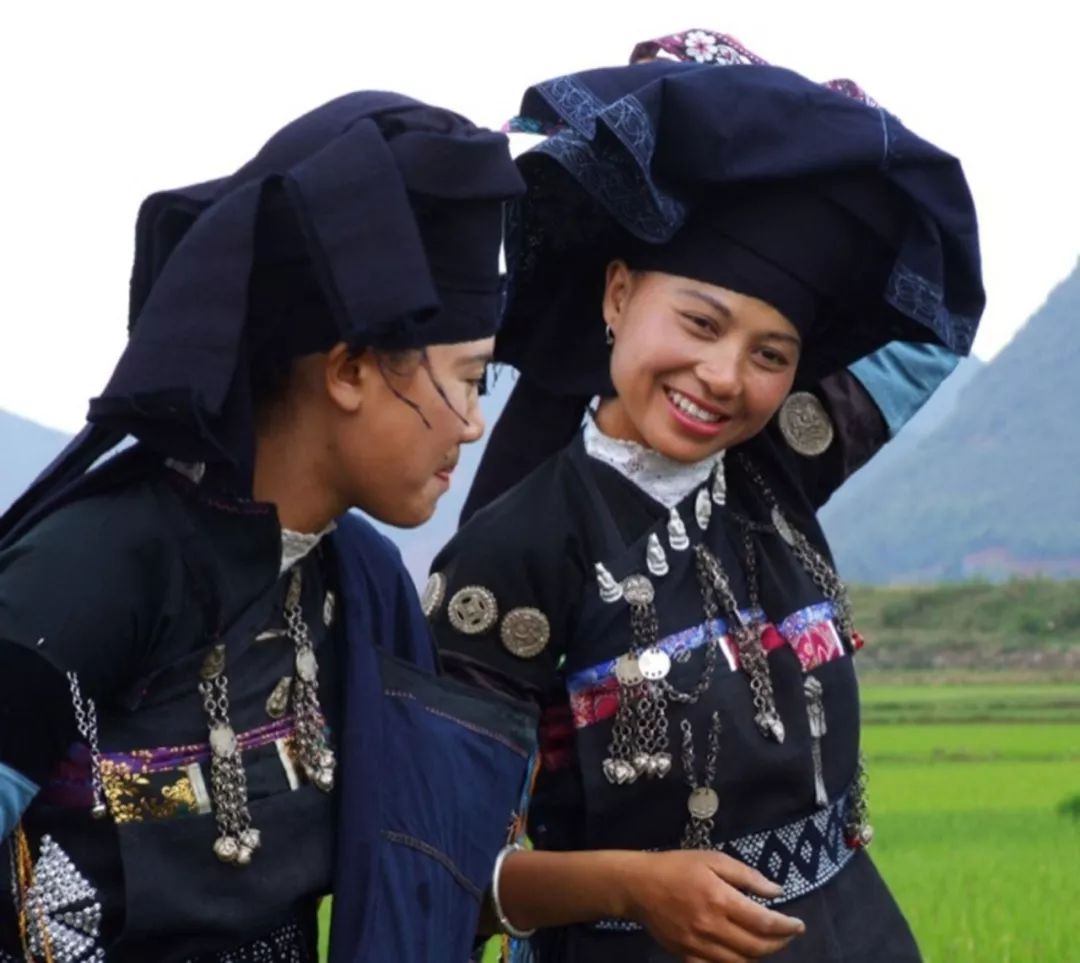
▲ There are also a small amount of silver ornaments in the Tatoudu costumes, and there are also batik ornaments. Taken in Pingyuan Town, Yanshan County in 2007
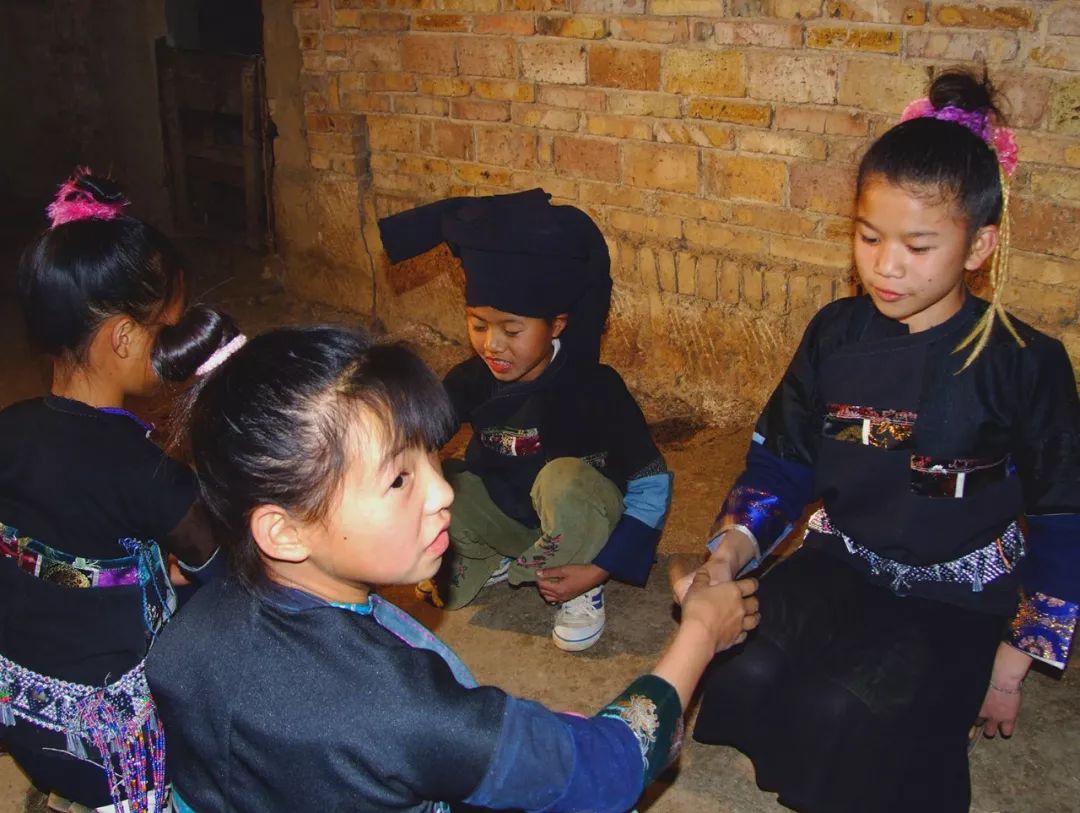
▲Children’s clothes with the head on, the headdress and bun retain the traditional top bun. Taken in Tangde Village, Wenshan City in 2007
3. Most of the “Jiantoutu” settled in Maguan County.
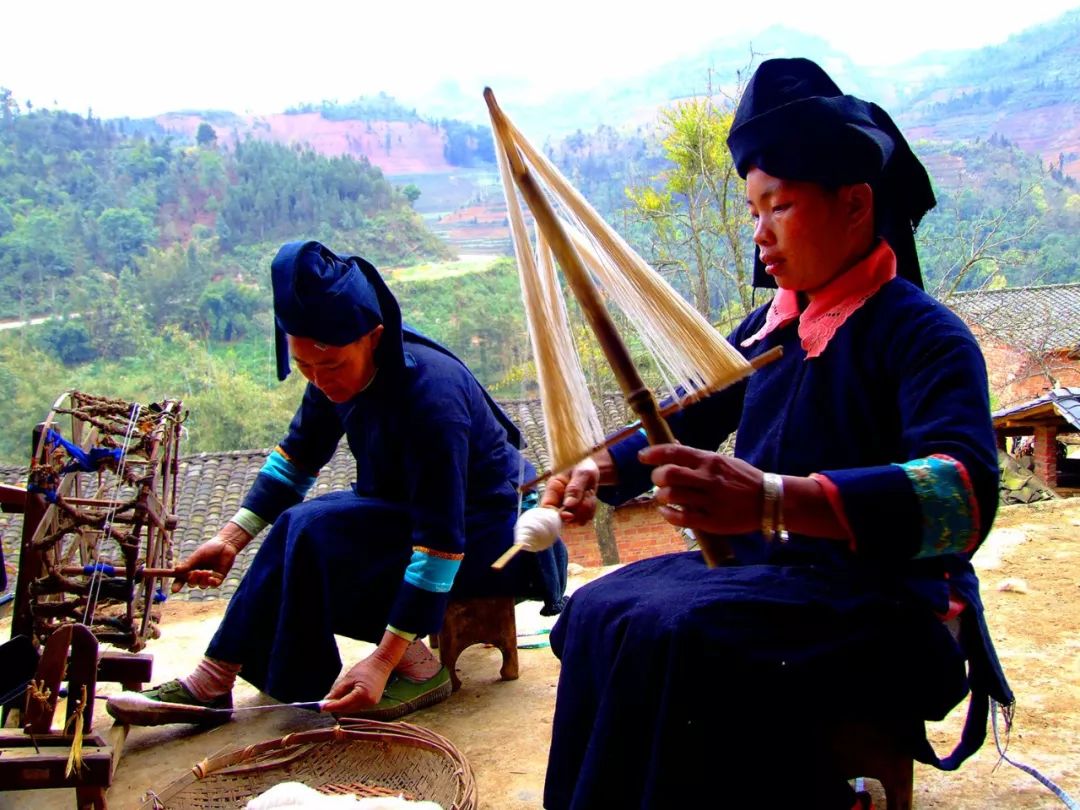
▲ Pointy soil, the way to identify it is to look at the hat. However, the overall style of their clothing is also different from that of Pingtoutu. They weave their own cloth and have exquisite cotton spinning skills. The color of their clothing is mainly the blue color shown in the picture, which is relatively simple. Taken in Nanlao Township, Maguan County in 2006
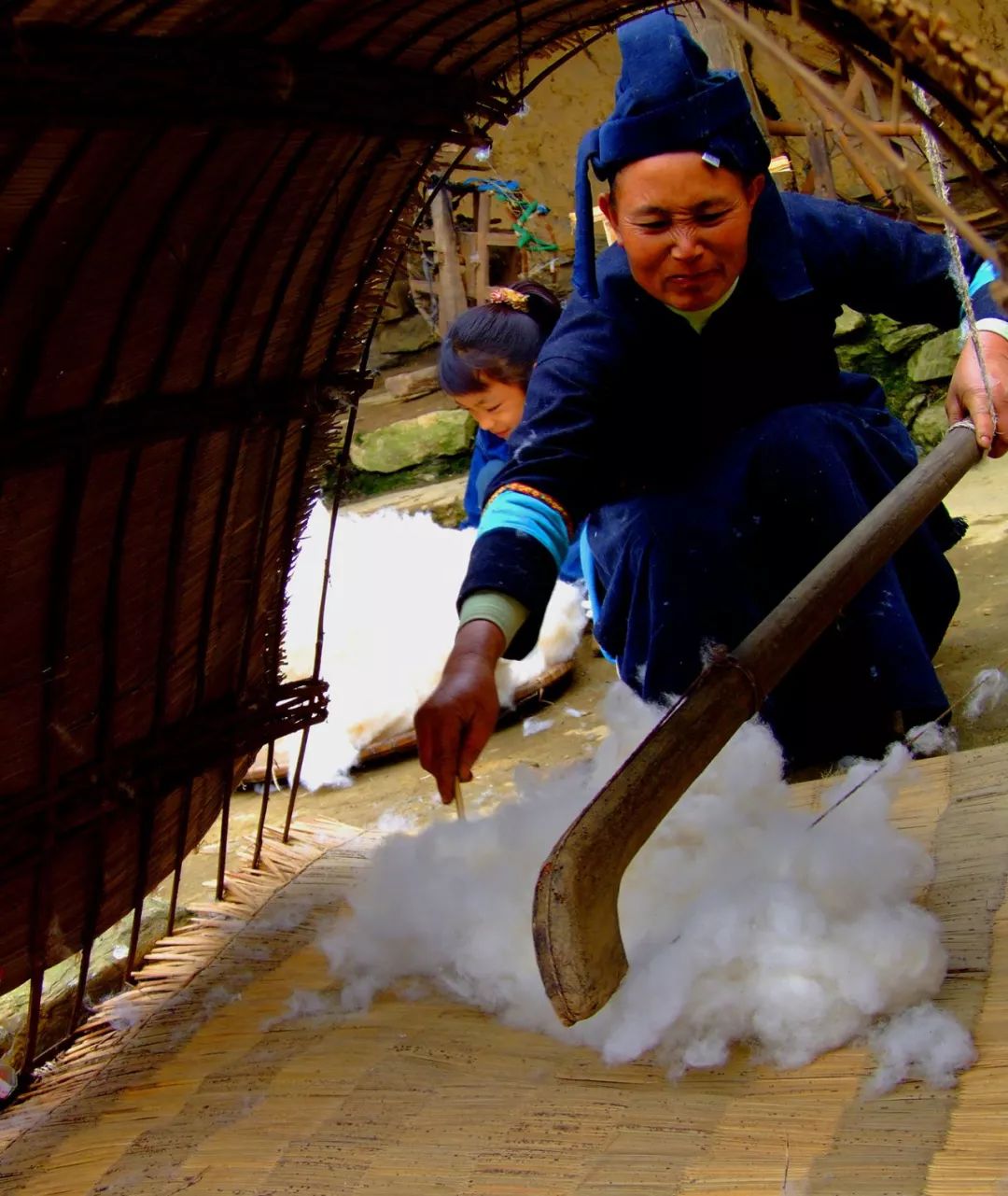
▲The pointed soil grows cotton, and their clothing is a self-sufficient system. More than ten years ago, this production method from collecting cotton to weaving and making handmade clothes was still the daily life of middle-aged women. Taken in Luchaichong Village, Nanlao Township, Maguan County, 2006
4. The population of “Biantoutu” is relatively small, mainly distributed in the west of Guangnan County.
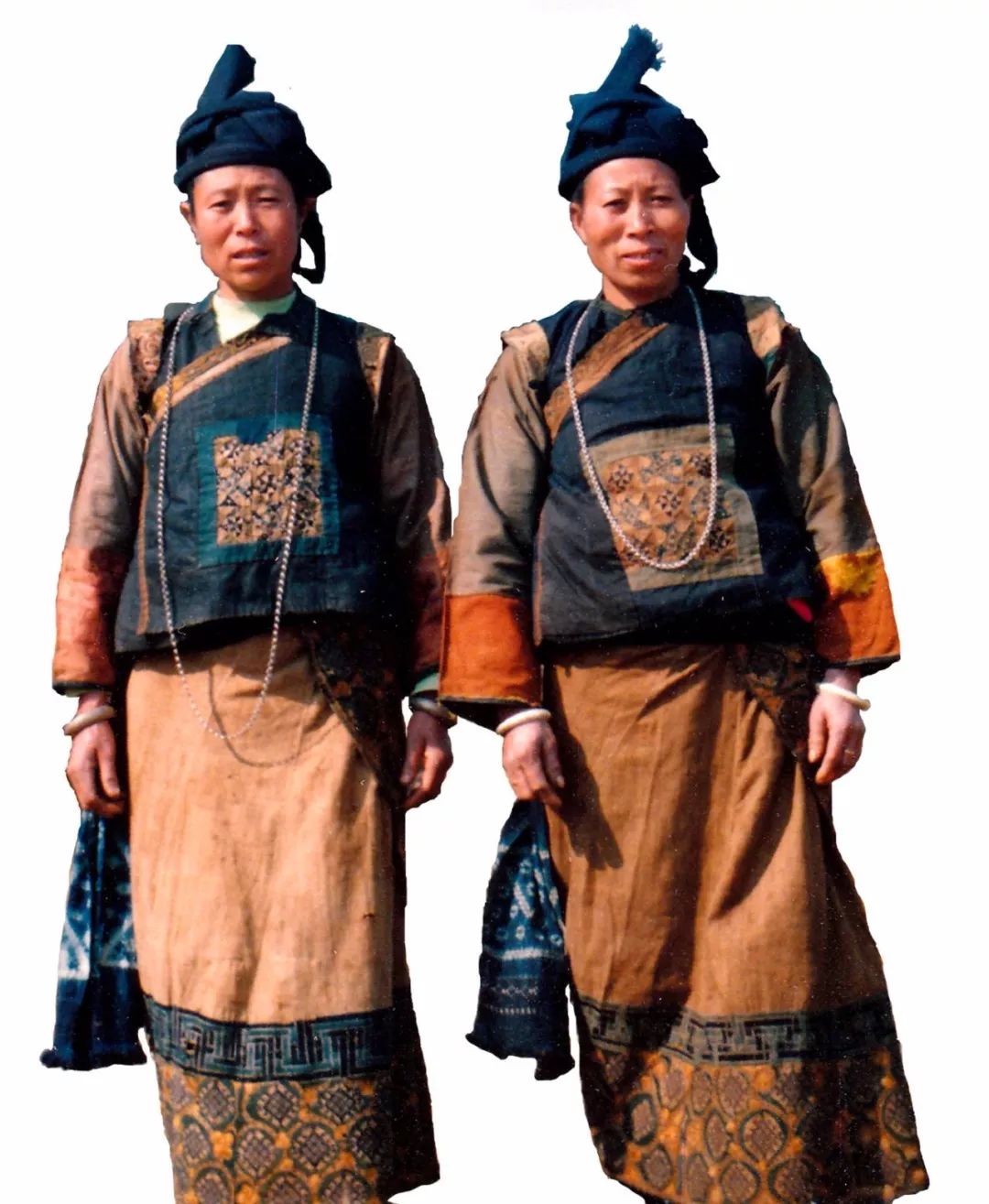
▲The traditional costumes of Biantoutu are the same as those of Tatoutu, only the wrapping of the headkerchief is different. Taken in Zhulin Town, Guangnan County in 2008
Clothes of the soil branch, the clothes of the three branches of “Pingtoutu”, “Tatoutu” and “Biantoutu” have “buzi” on the front and back.
After the tradition of “Pingtoutu”, “Buzi” is an ancient seal pattern. It is said that it is an early battle and city building meritorious service, which was bestowed by the emperor. It is a record of service to the country and a commemoration of glory.
In the early days, there were two five-character verses (written in ancient Zhuang characters) embroidered on both sides of “Buzi”. Due to the long history of inheritance and embroidery or variability, the characters were preserved, but they could not be deciphered.
The costumes of “Jiantoutu” retain the traditional self-woven blue cotton cloth, which is simple and has no special embroidery patterns.
Further reading: From the movie “Spirit of the Himalayas” to the costumes of the Lhoba ethnic group: rebirth from a desperate situation, immortality
Further reading: Fashion catwalk shows have been held in this village for more than 1,300 years
Information No. 7: The author Wang Mingfu, Wenshan Zhuang nationality, retired from the Wenshan Ethnic and Religious Committee, and is currently the chairman of the Wenshan Folk Literature and Artists Association. He began to photograph Wenshan Zhuang people in 1984. He has devoted himself to collecting and researching the traditional culture of the Zhuang nationality for a long time, conducting field investigations and taking pictures.
